Also on my trip to Boston, I took the opportunity to get some photos of the local dinosaurs. Many of the species aren’t new to me, but I captured some behaviors I hadn’t seen before!
Walden Pond
Walden Pond, where the famous nineteenth-century transcendentalist Henry David Thoreau lived in a cabin for a couple of years, has some nice hiking trails through the lush East Coast woods. We heard more birds than we saw–Eastern Wood Pewees and Wood Thrushes were hard to spot among the dense foliage. But I did get a few photos of the local wildlife.
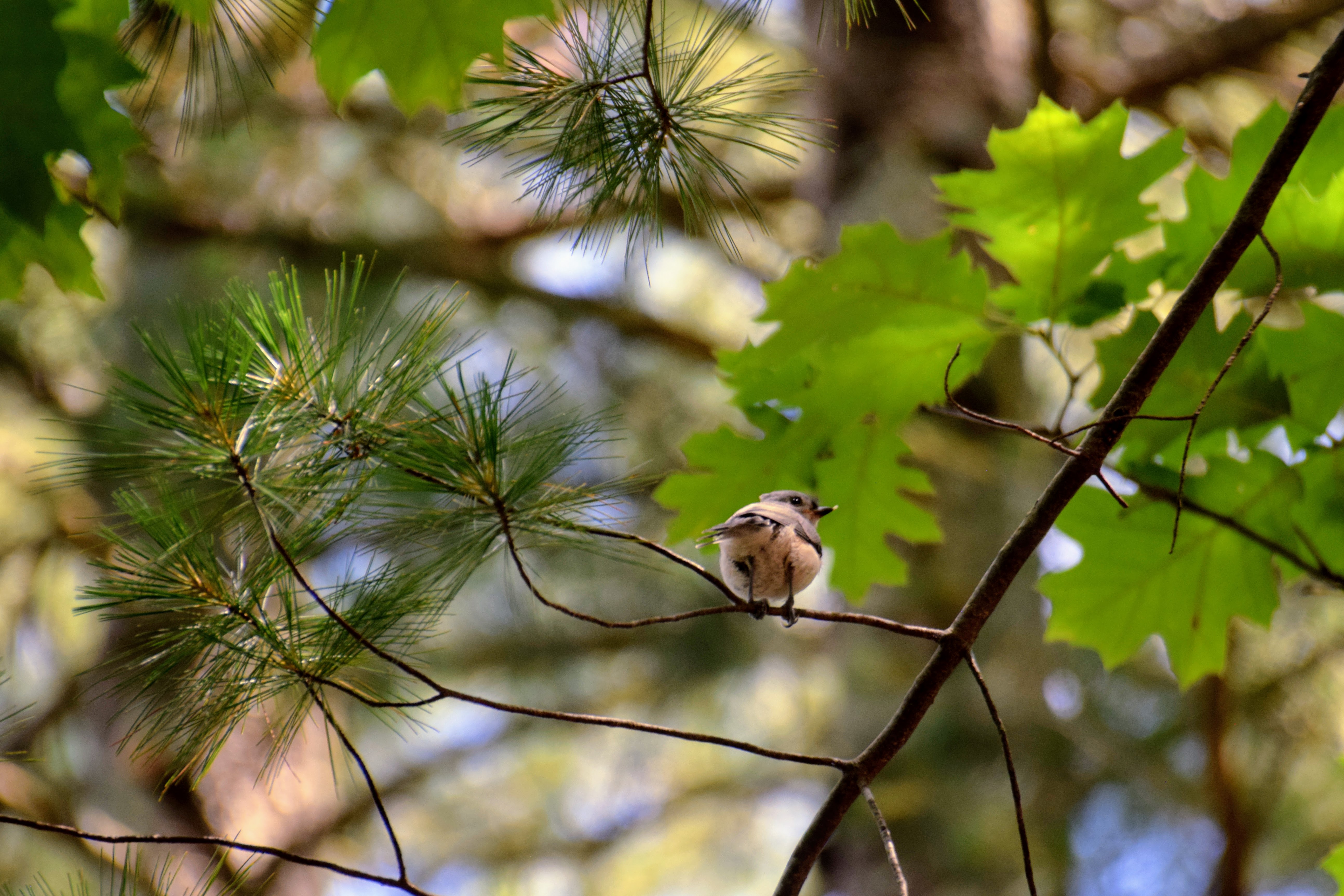
On the West Coast, we have Oak Titmice, but in most of the rest of the country, they have Tufted Titmice. They look quite similar to ours, but their ranges don’t overlap, so it’s easy to tell them apart.
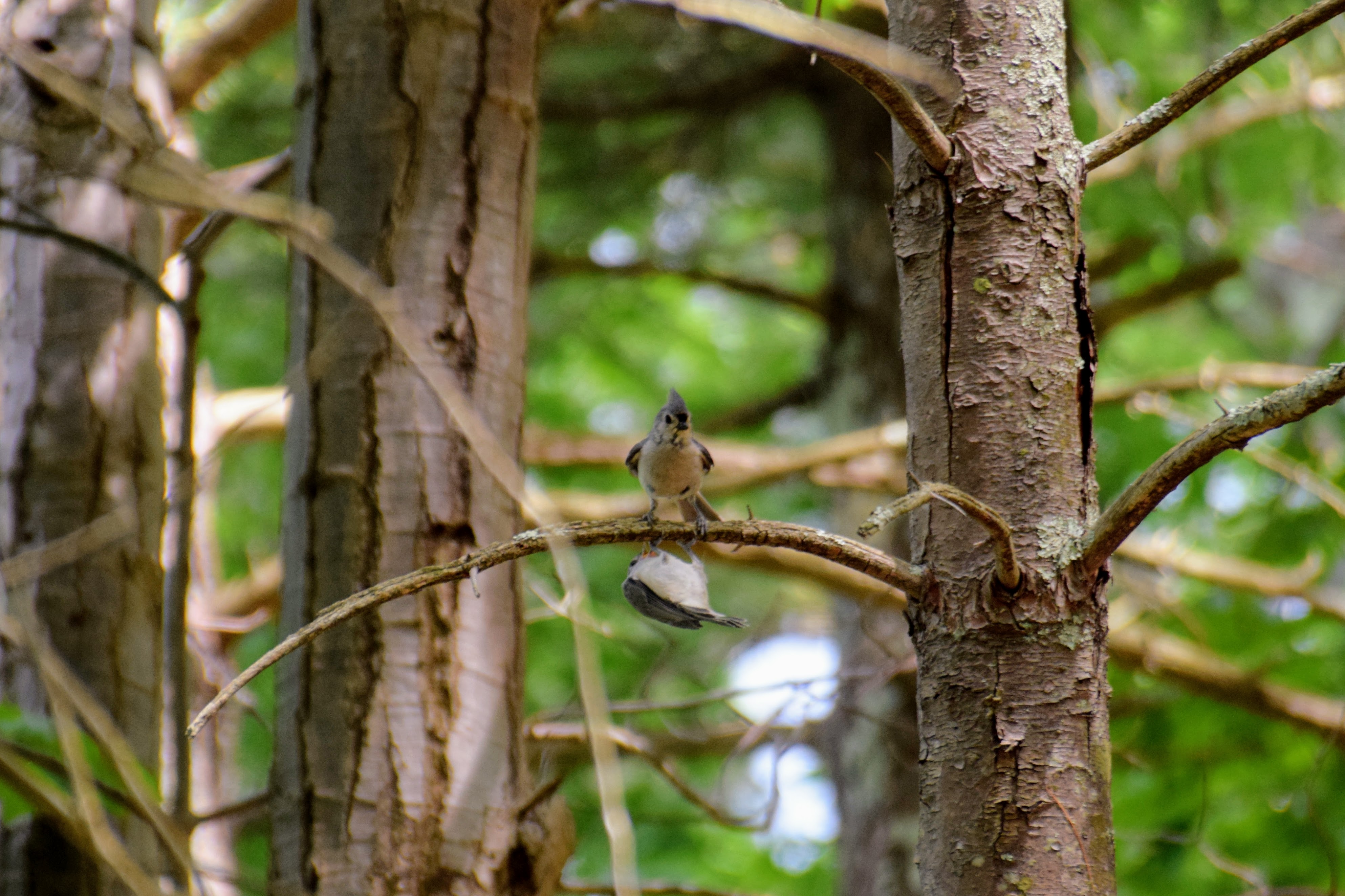
I don’t think I’ve ever seen two wild birds hanging on opposite sides of a branch before. It’s like a movie poster or something!
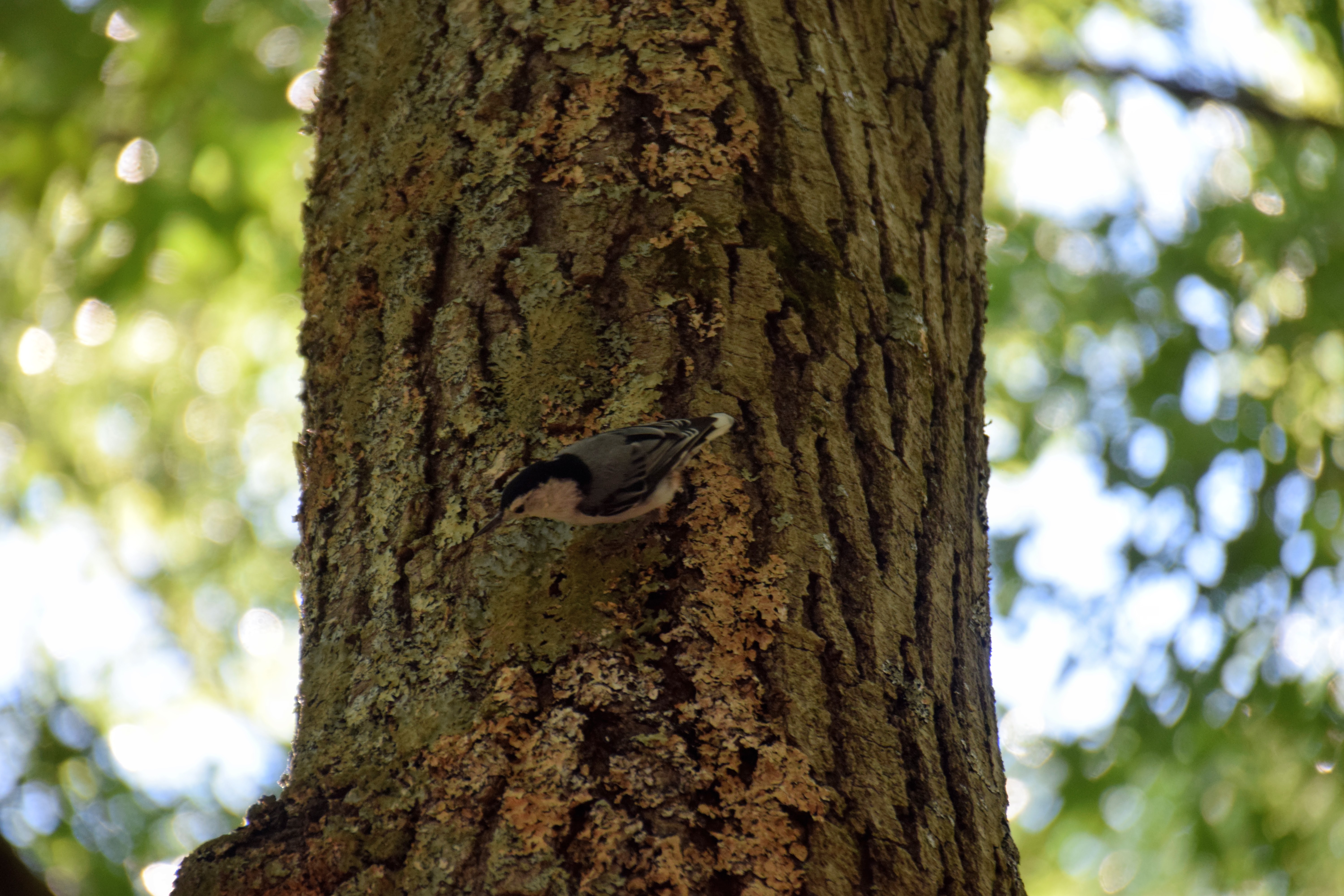
We have White-Breasted Nuthatches on the West Coast as well, but this one was particularly bold, so I was able to get more of a close-up than I’ve gotten before. I’m always impressed by birds that can climb upside-down. Unlike mammals, they only have one set of limbs to use!
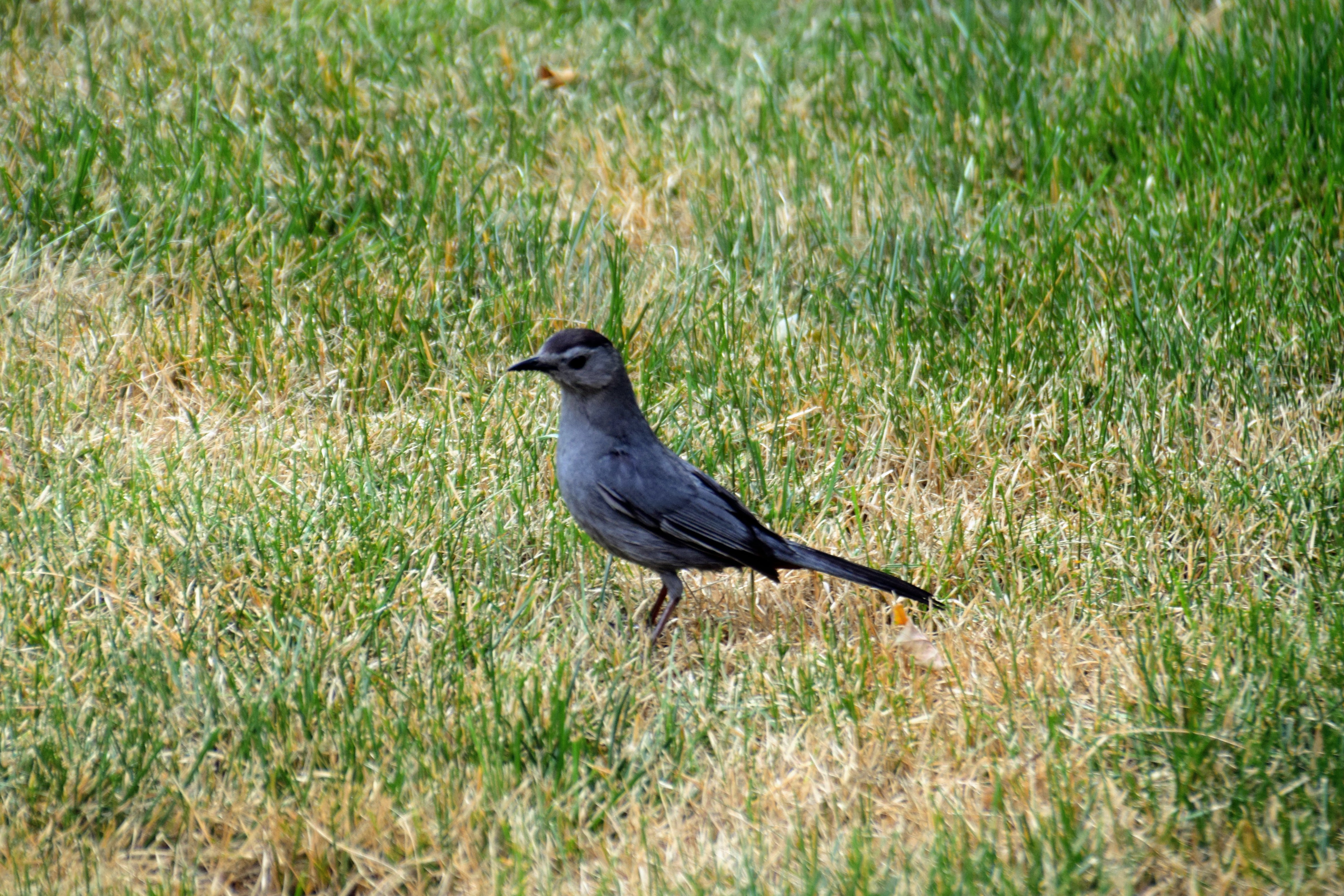
The West Coast equivalent of the Gray Catbird is the Northern Mockingbird. This catbird seemed to be used to people and approached me closely. Actually, it seems like a lot of birds in Boston are quite unafraid of people.
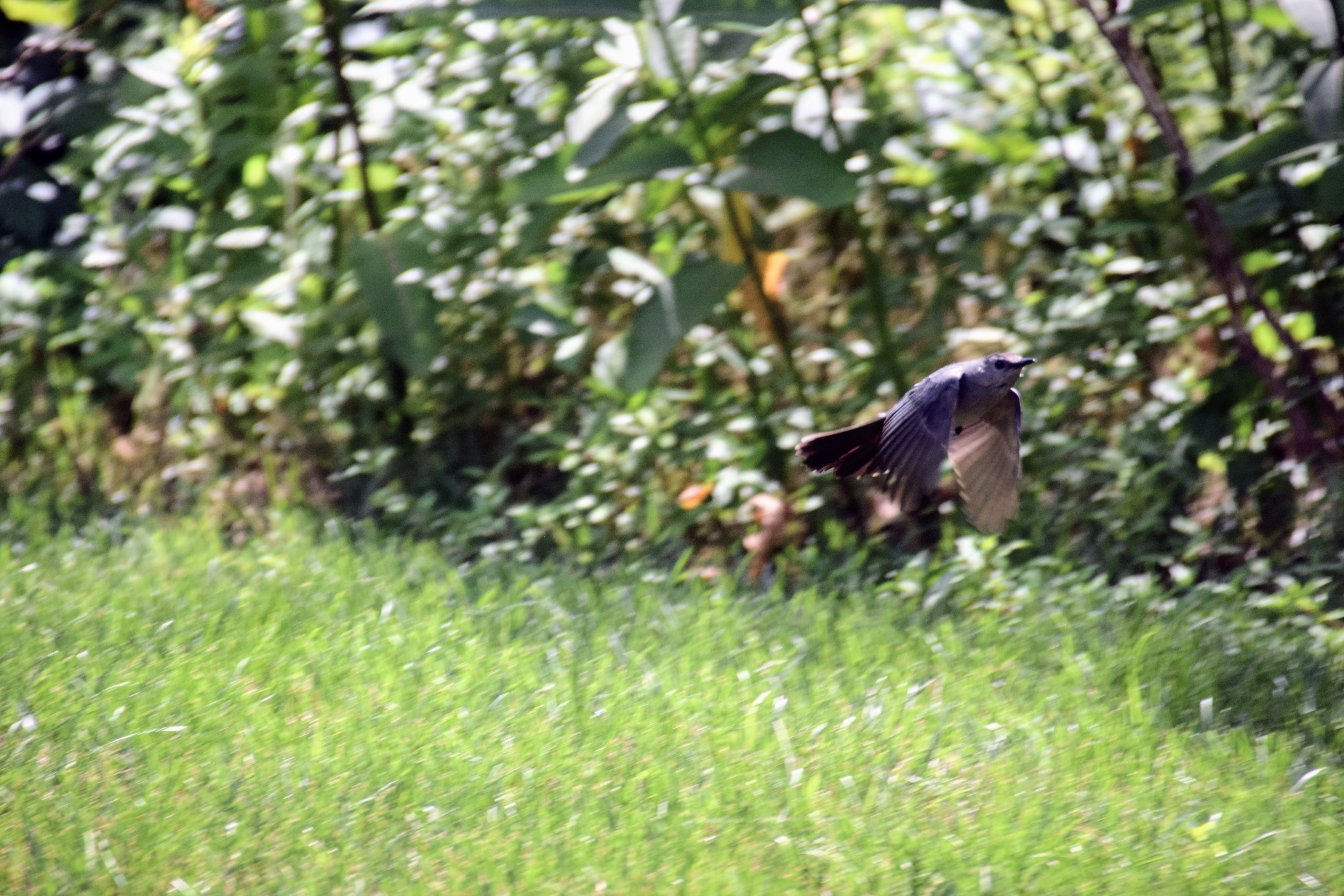
This is the same catbird as above.
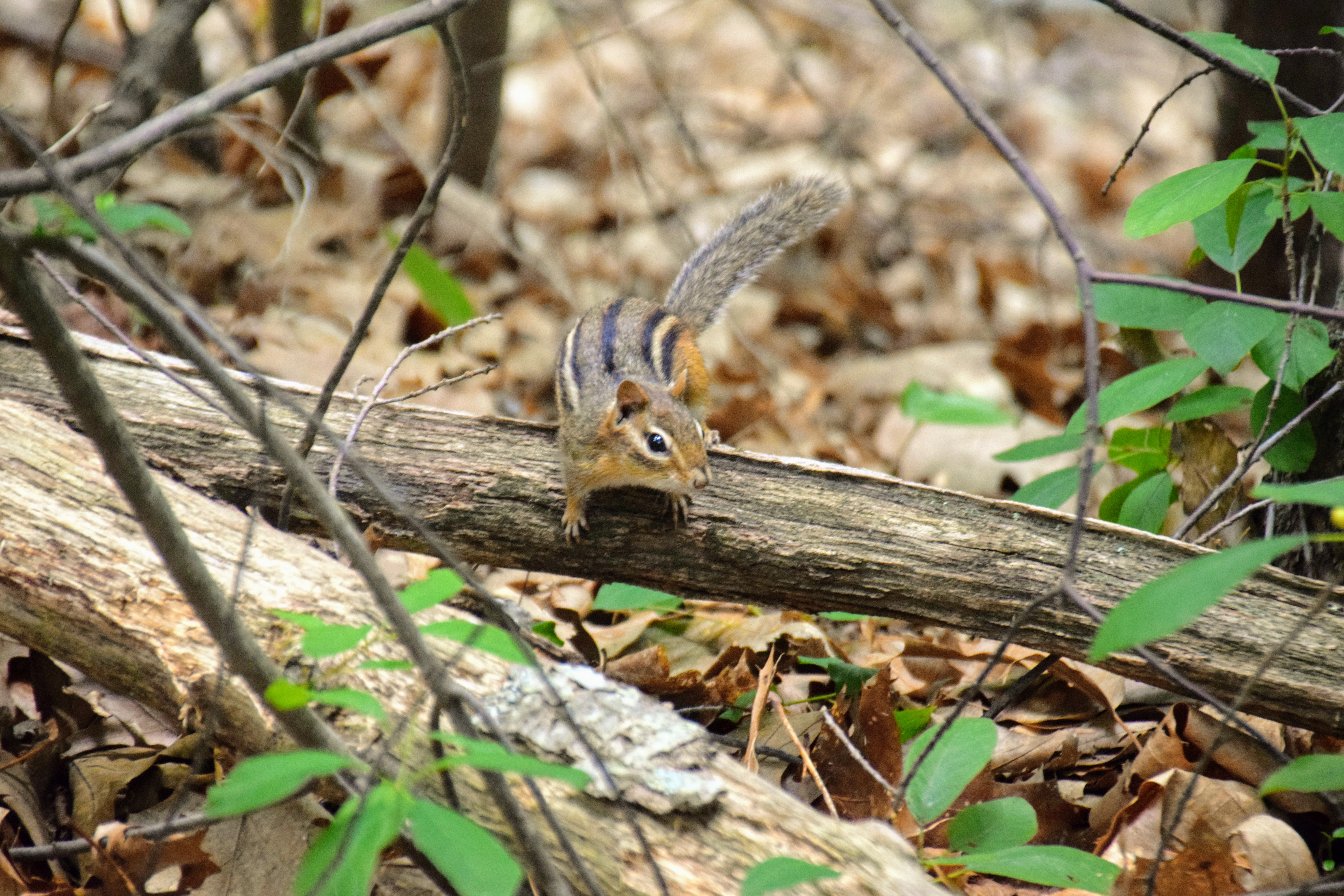
There were also adorable tiny mammals at Walden Pond, such as this chipmunk.
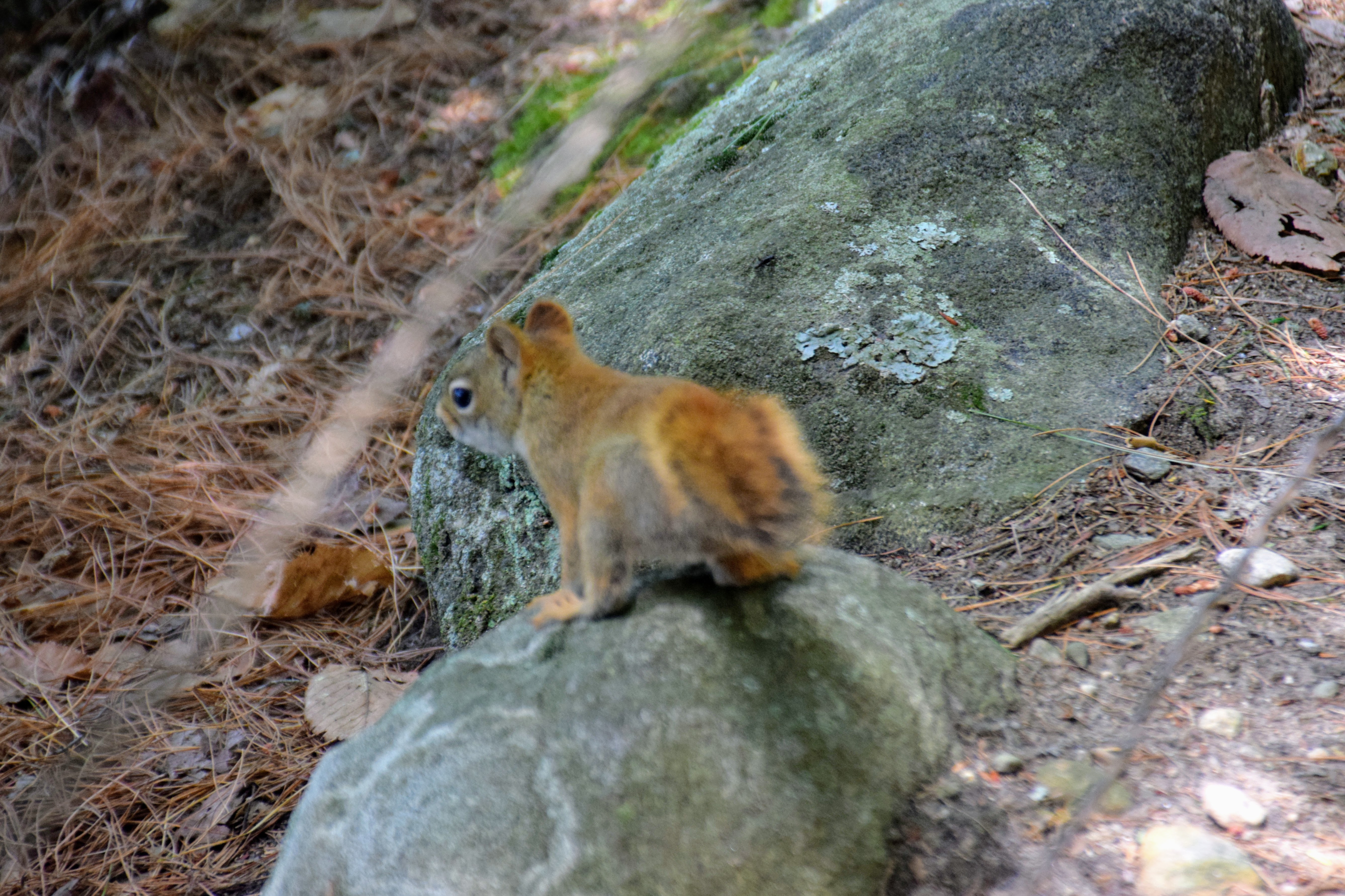
And this tiny ground squirrel. Is it a different color morph of chipmunk? Or a baby squirrel? Or just a very small squirrel species? Don’t ask me, I don’t know about mammals.
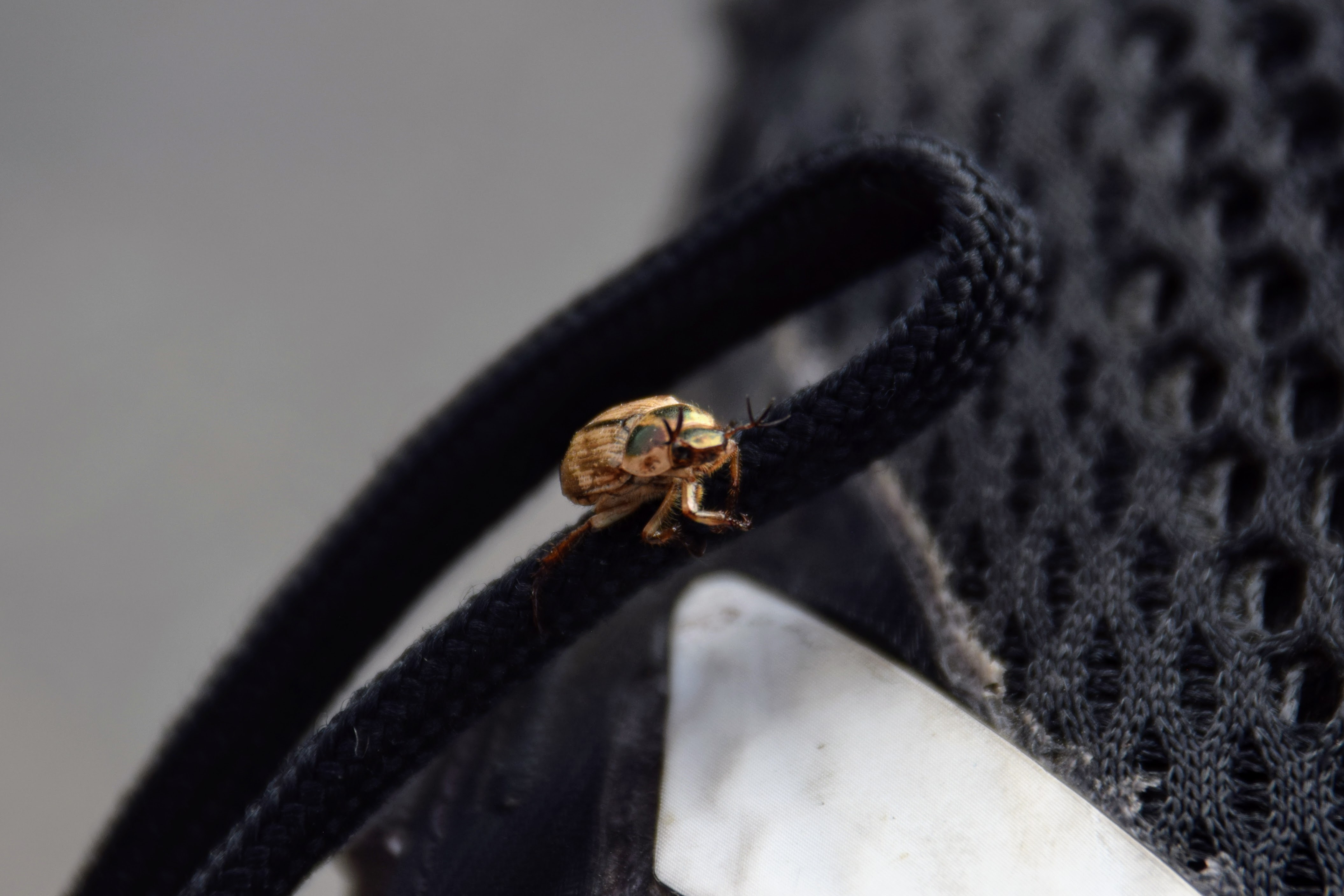
When I was leaving Concord to take the commuter rail to downtown Boston, this beetle landed on my shoelace. It was very photogenic and had eyelash-like antennae.
Shorebirds
The first bird I saw after stepping off the train from the airport was not a pigeon or a sparrow, but an enormous American Herring Gull stealing a hot dog directly out of a tourist’s hands.
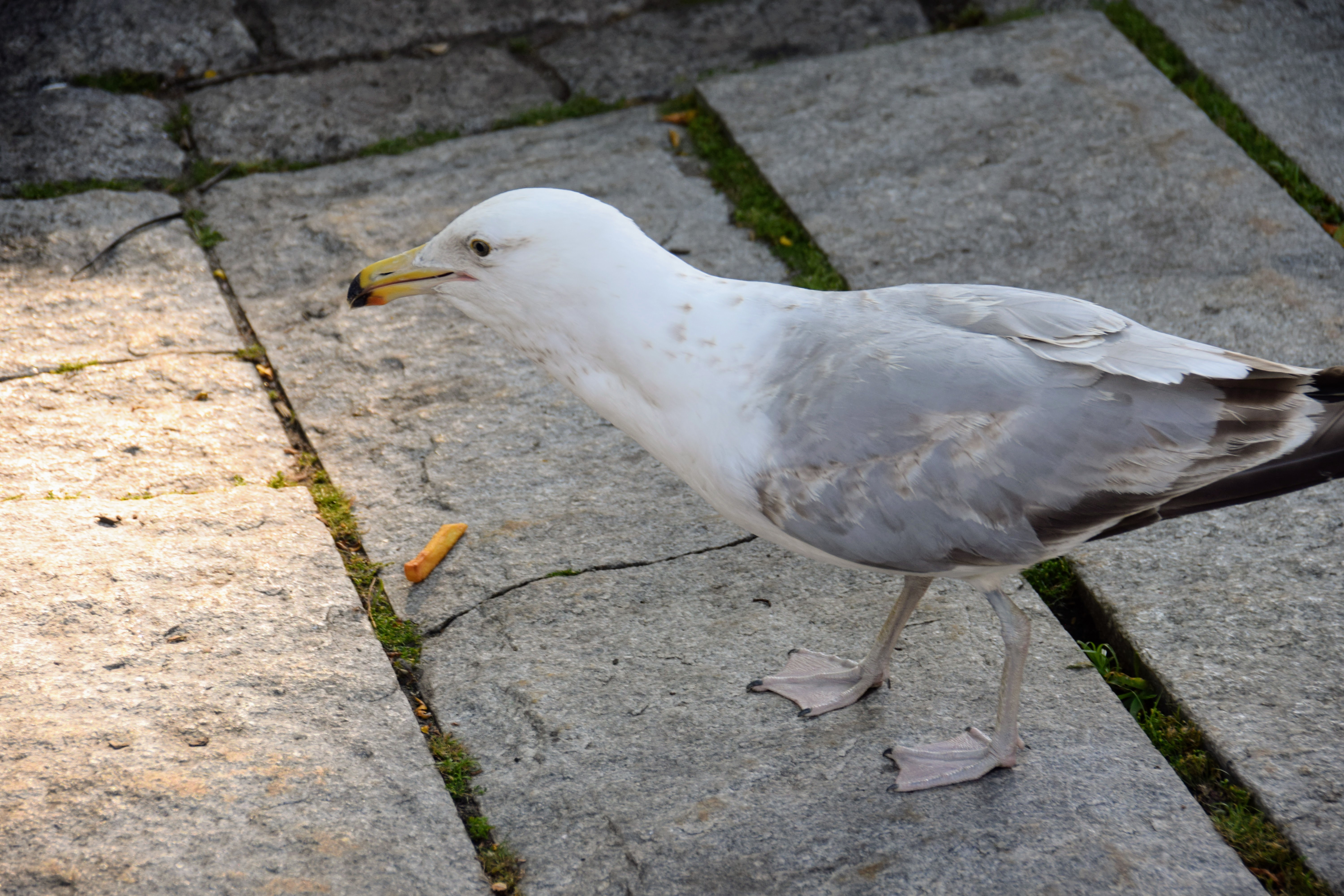
Rather than being upset, the victims seemed amused and fed it lots of French fries.
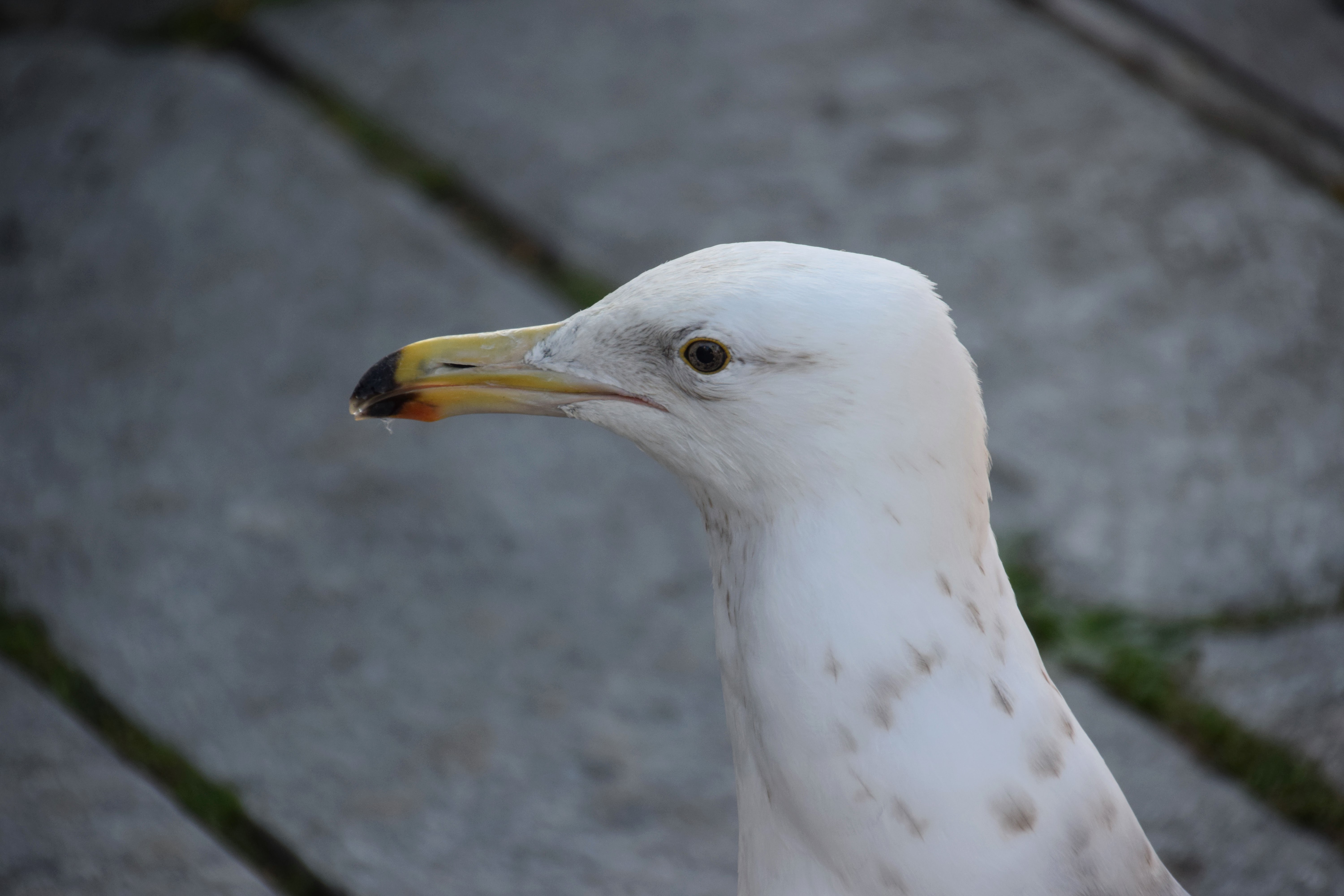
American Herring Gulls are quite handsome.
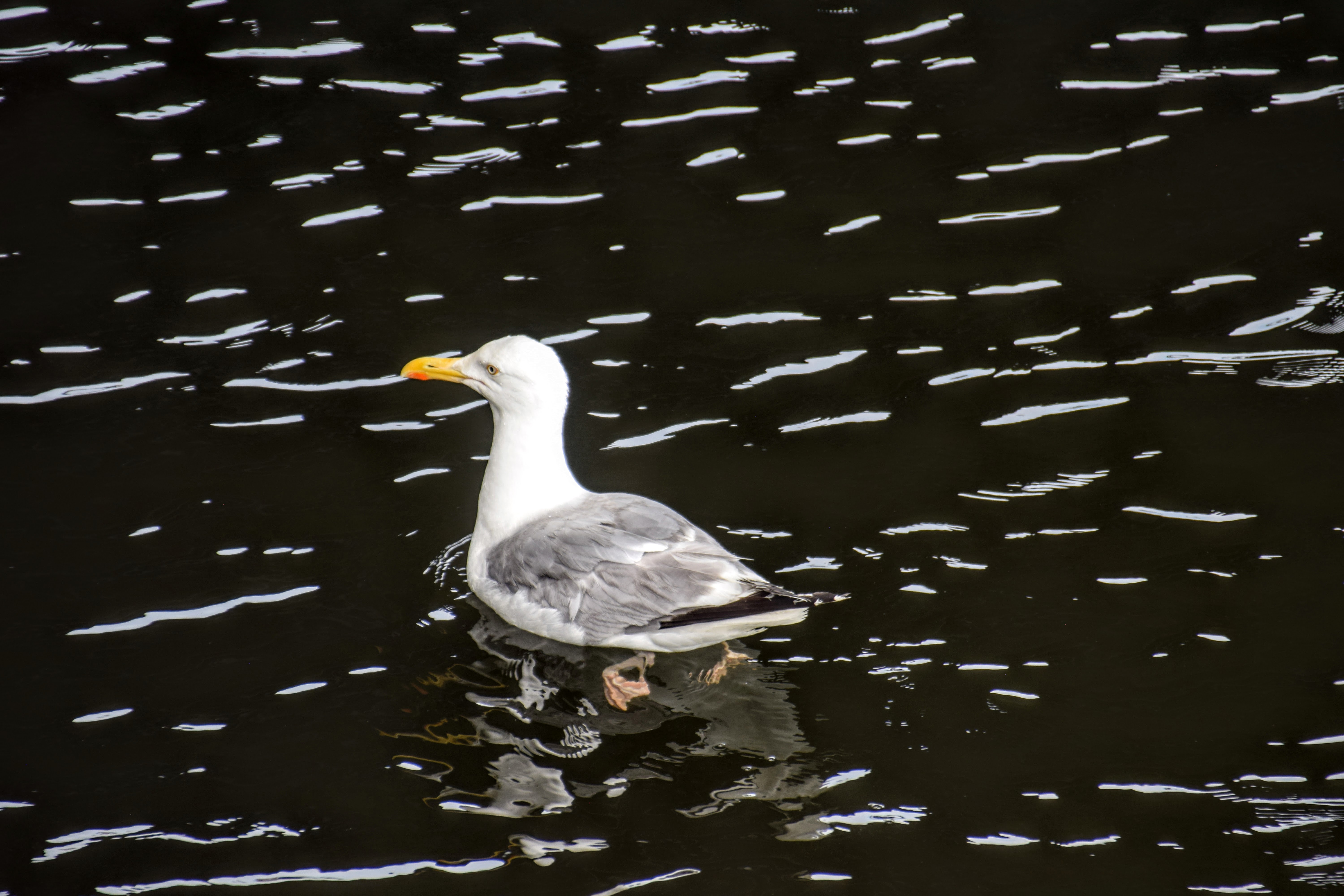
While intellectually I know that gulls spend a lot of time on the open ocean and thus have to be good at floating and swimming, they always look less comfortable with it than waterfowl, and seem potentially prone to capsizing.
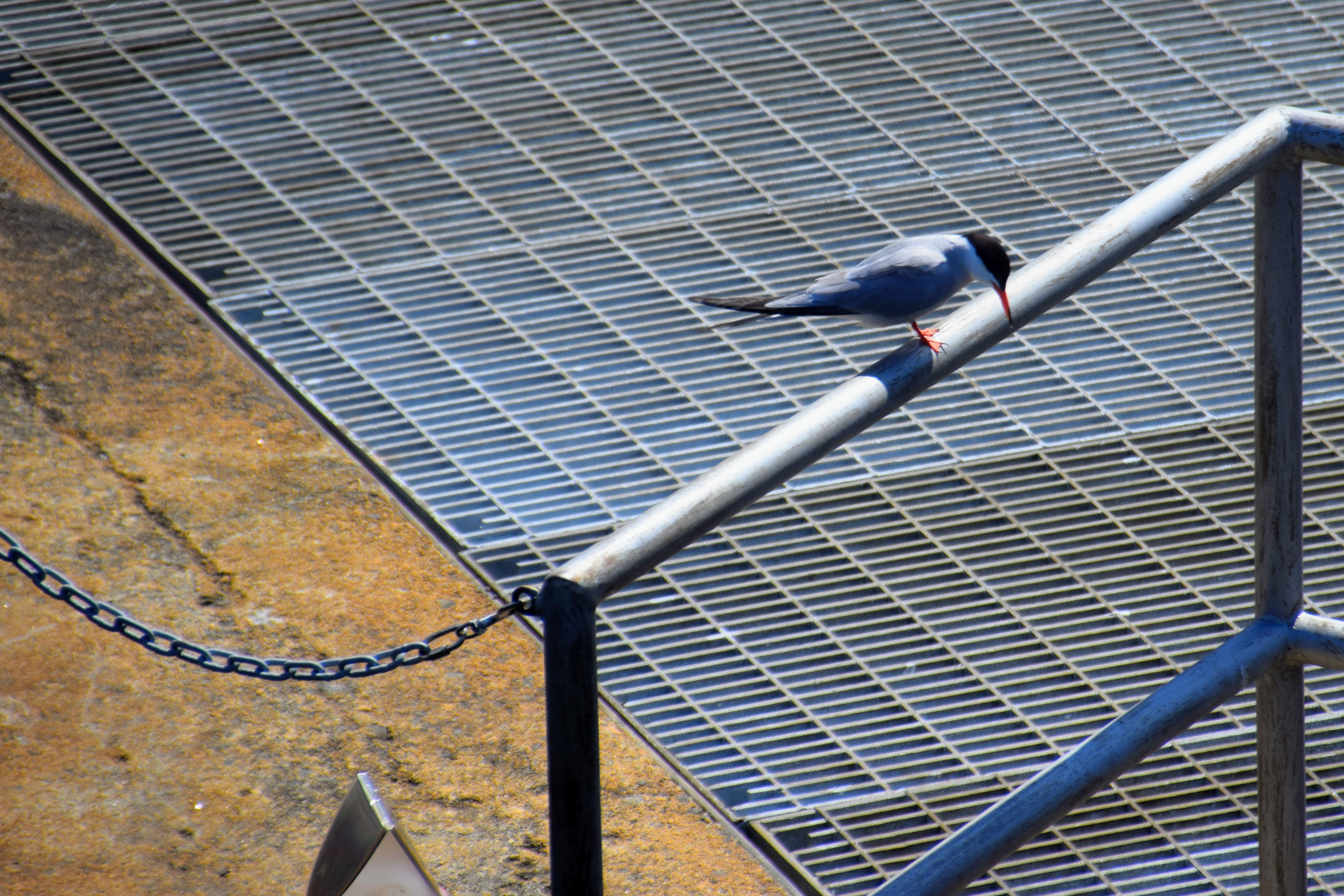
While on the West Coast we have Caspian Terns or Forster’s Terns, which I’ve never seen in groups of more than one, in Boston they have the Common Tern, which gathers in big flocks.
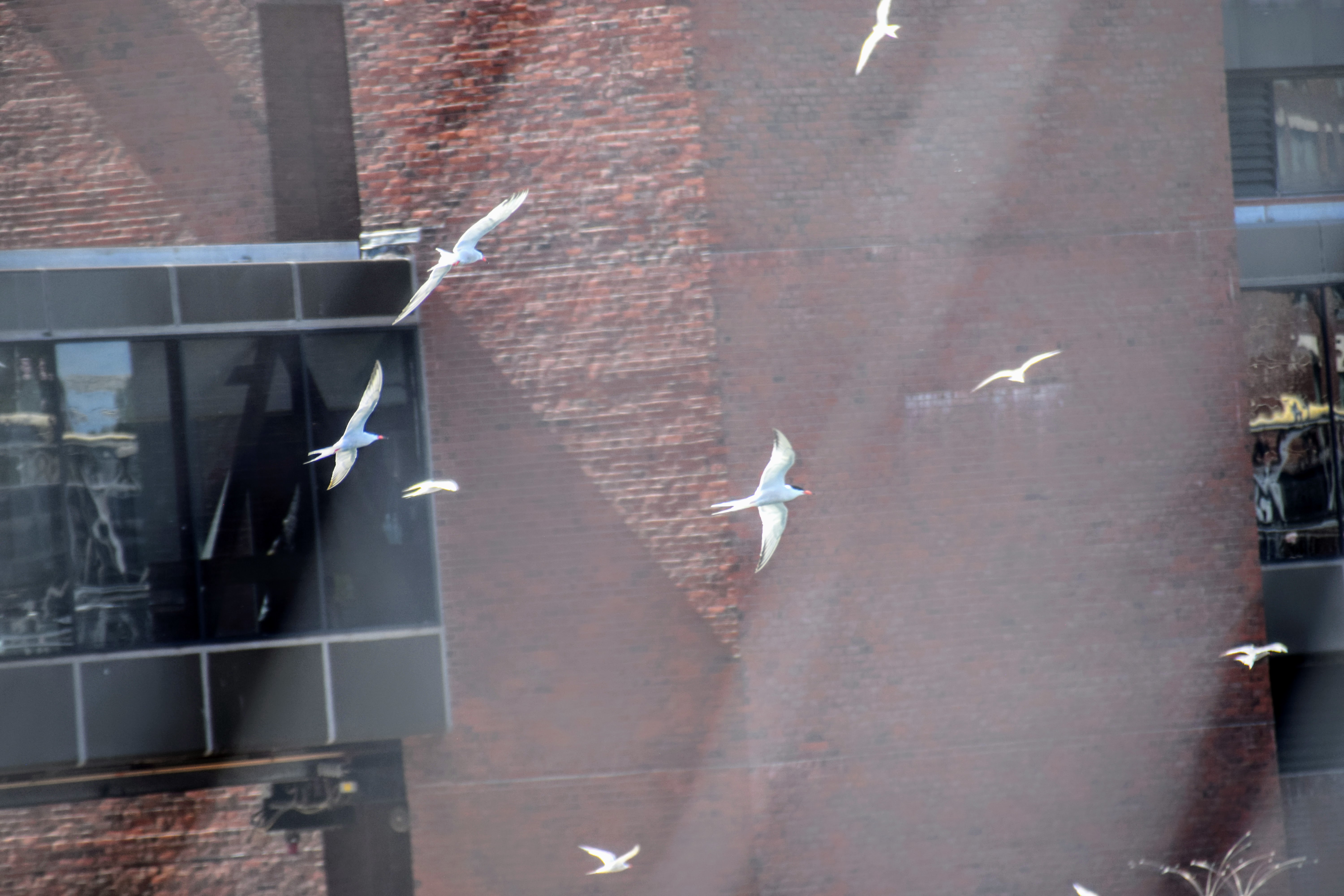
I took this photo from the temporary bridge along the Freedom Trail, where my view of the water was occluded by a chain-link fence. Lame.
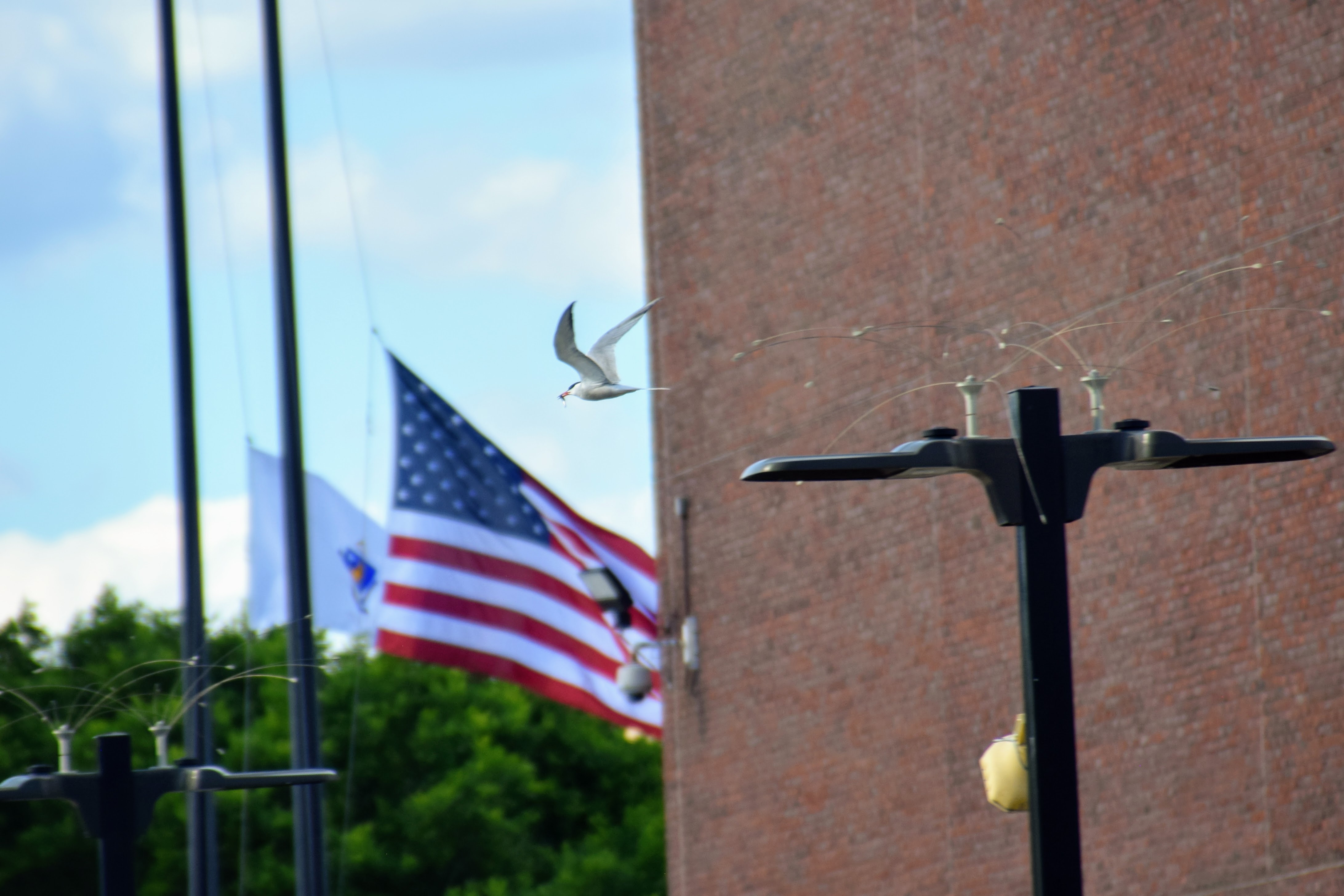
This tern not only has caught a fish, but is showing its patriotic Bostonian spirit! (On a more somber note, the flags were flying half-mast because of the Highland Park shooting.)
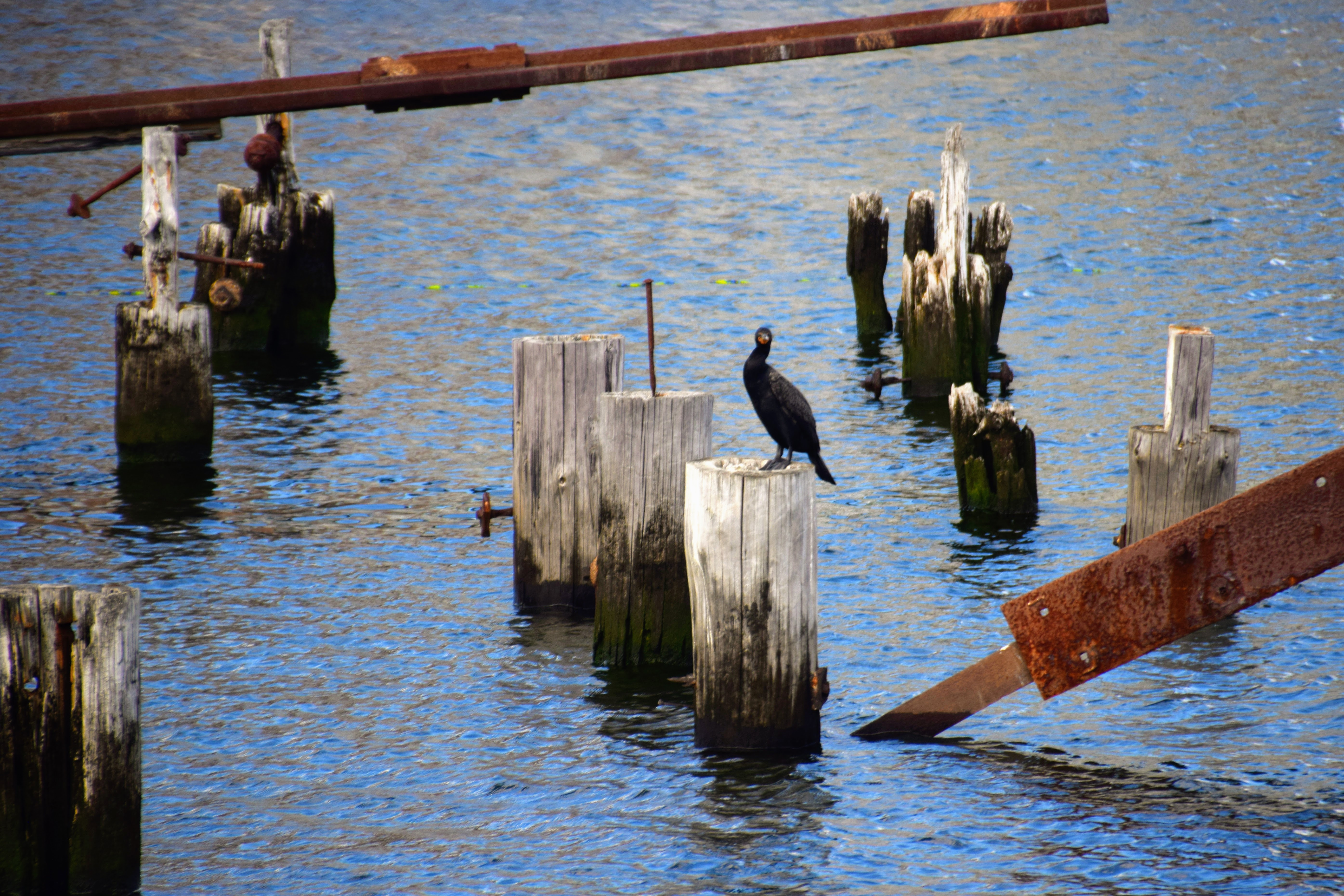
Double-Crested Cormorants are also common on the West Coast. These ones were hanging out near the USS Constitution.
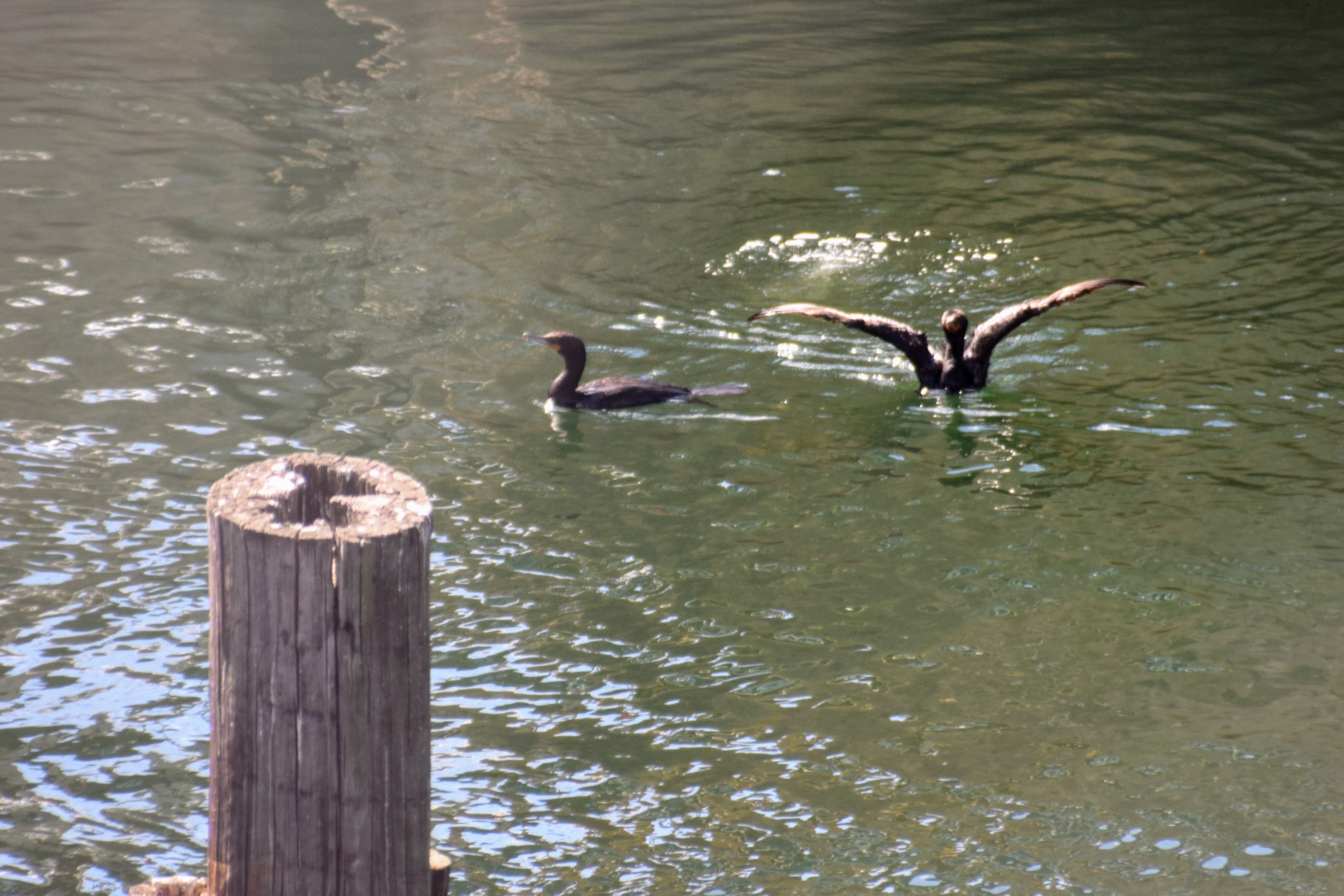
I guess if a cormorant can’t find a perch from which to dry its wings, or is too lazy, it can just hold them up while swimming, like this.
House Sparrows
While House Sparrows are invasive and are also found on the West Coast, I can’t help but like them. They’re so busy and active, and they seem to have their own little civilization going on in the middle of ours. They build houses, take baths, and have councils and domestic disputes. They’re undeniably individuals.
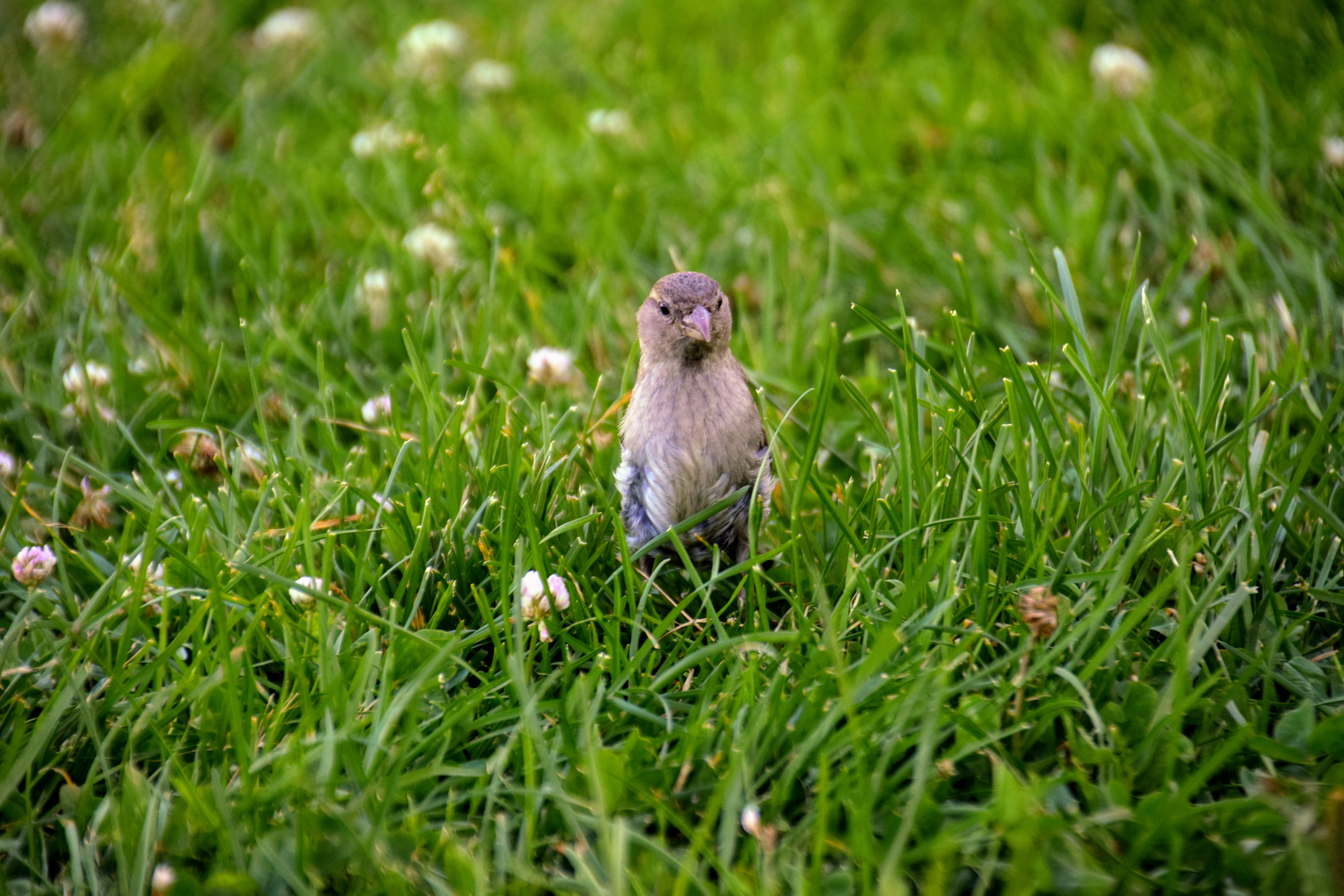
The second bird I saw upon arriving was an audacious House Sparrow lady who investigated me while I was sitting in the grass.
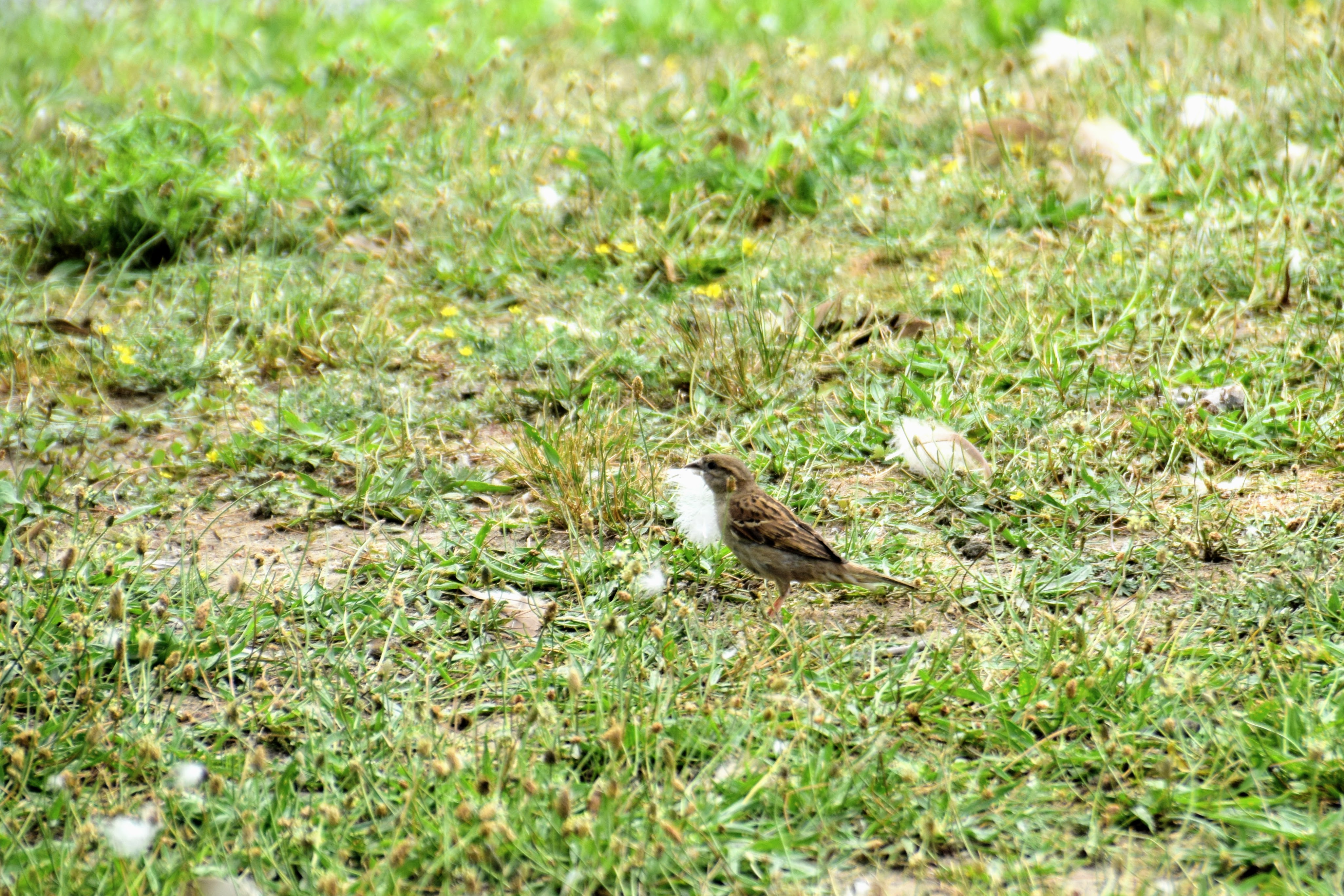
Here’s an industrious mother collecting material for her nest.
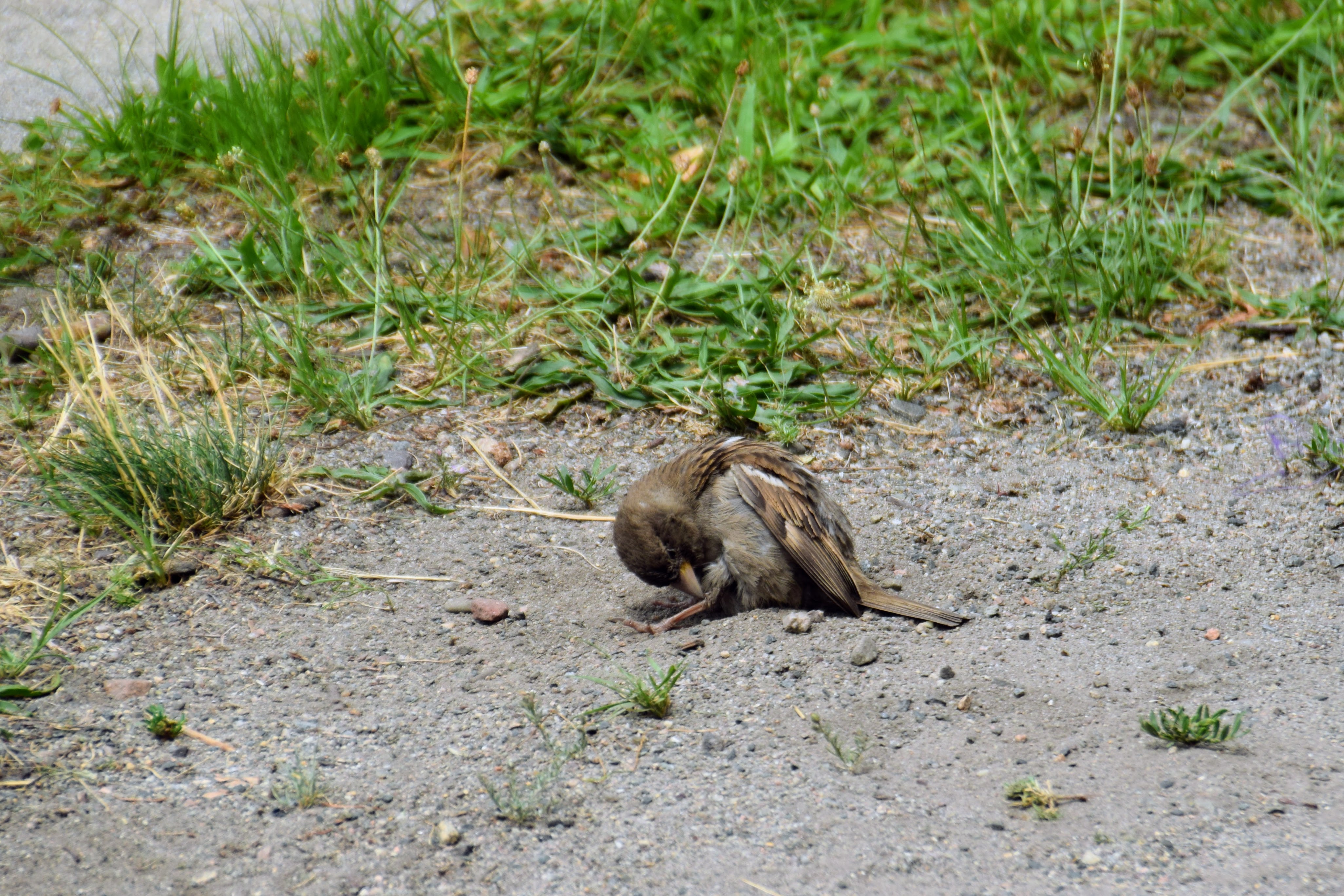
Here’s a lady taking a dust bath. Dust helps to waterproof their feathers and get rid of mites. Kind of like dry shampoo?
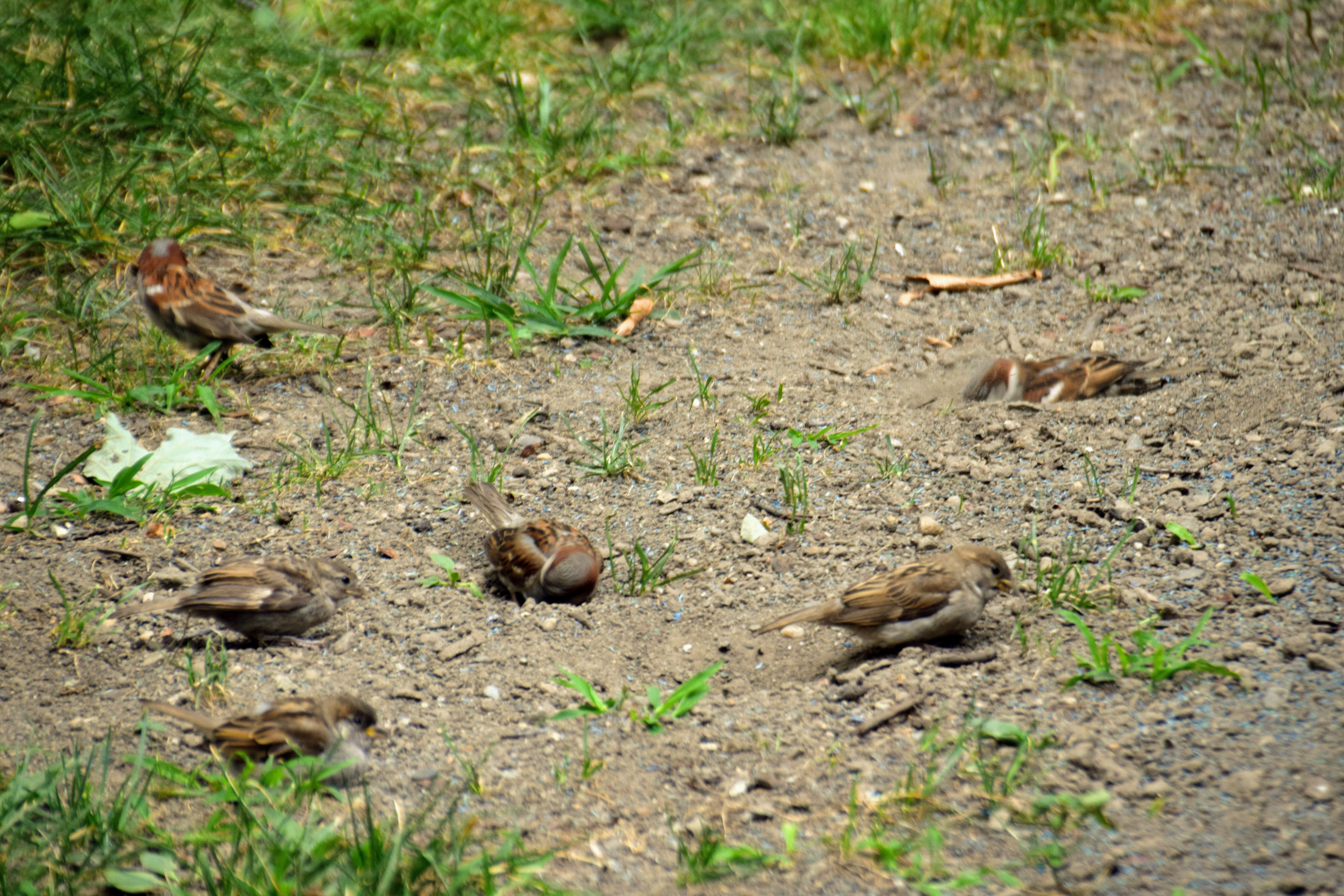
The community bathhouse!
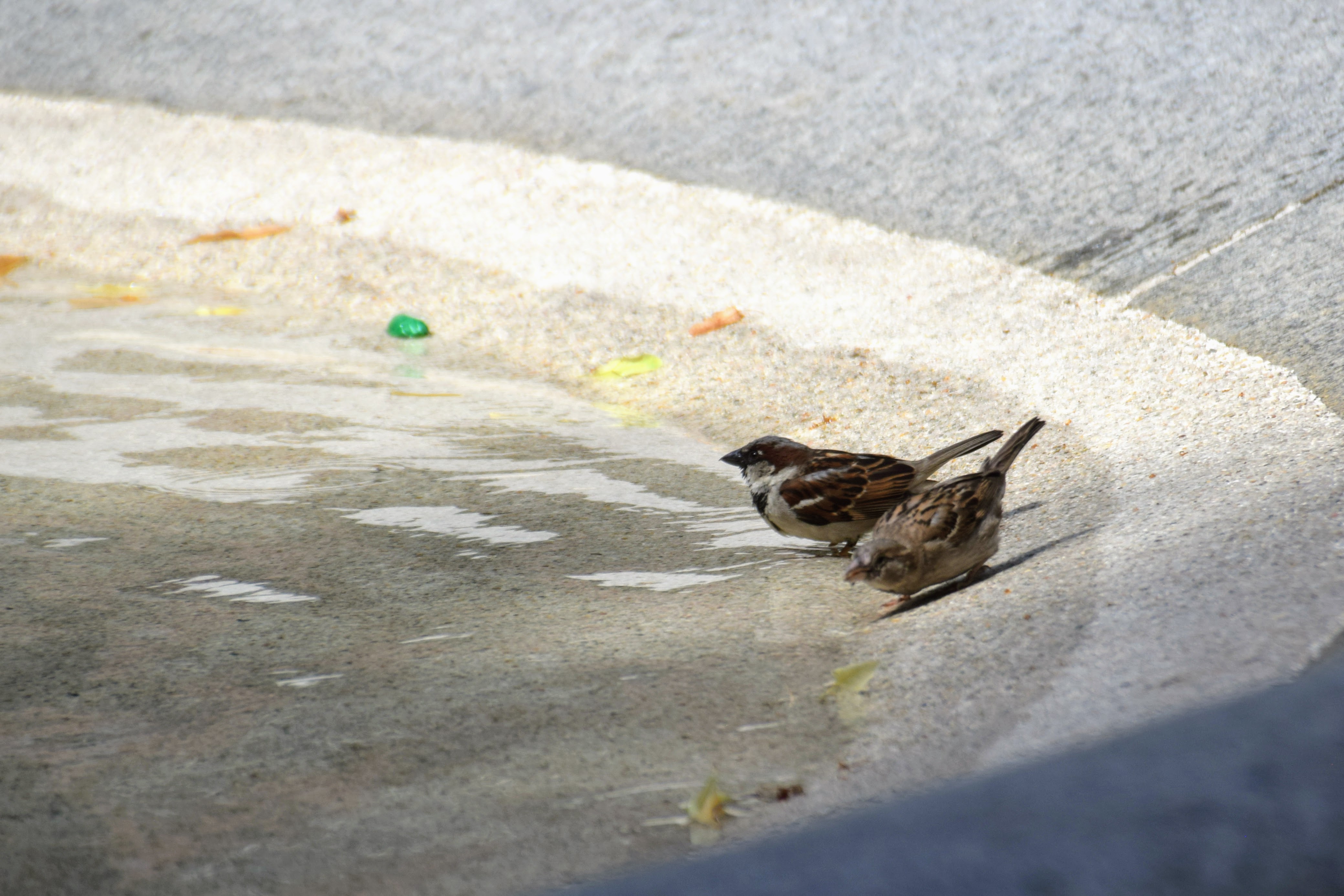
In Paul Revere Plaza, they congregated to drink at the fountain.
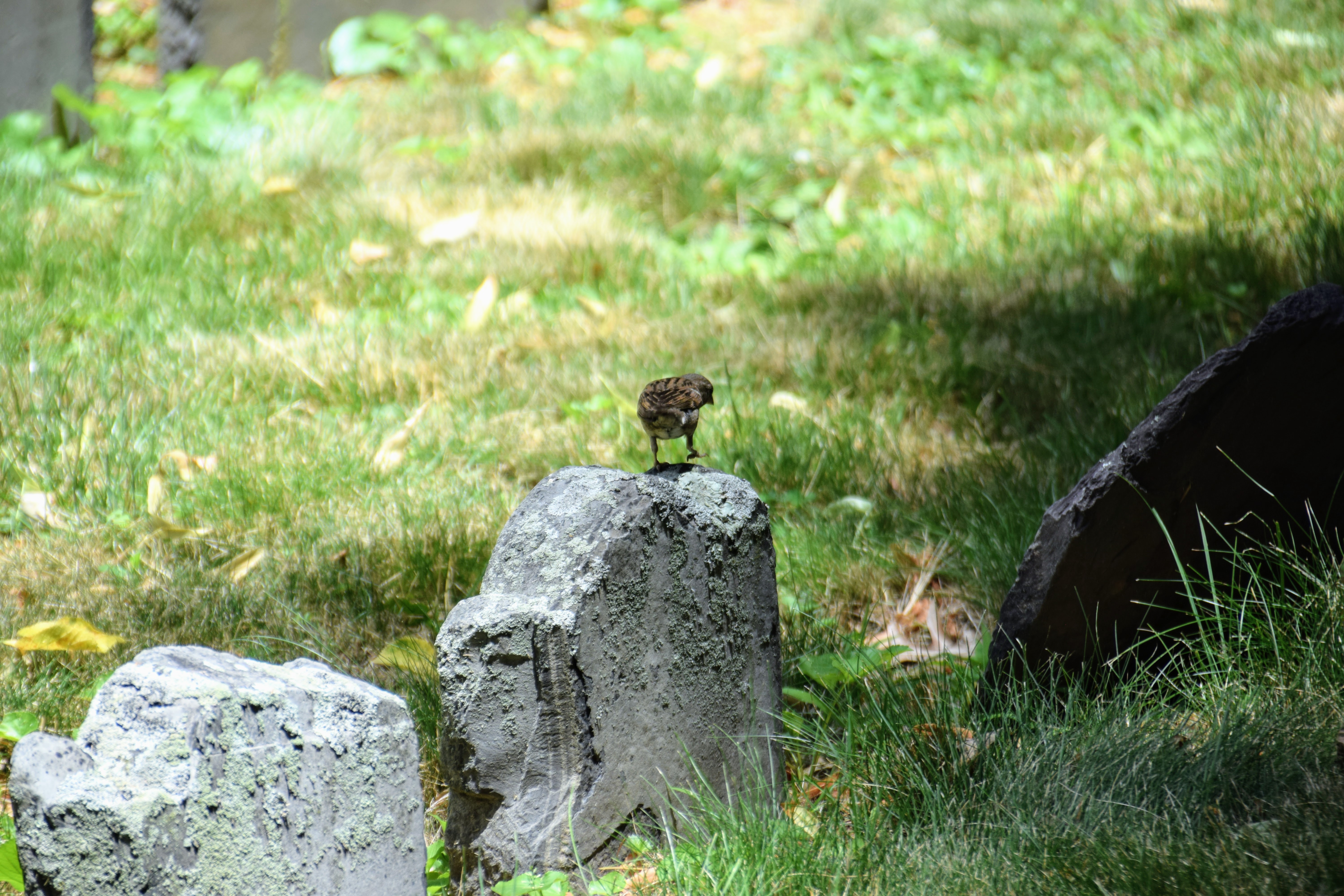
Weathered old gravestones were popular places to perch.
Starlings
Another invasive but charismatic species found across the country is the European Starling. And again, I was able to witness a variety of behavior I hadn’t seen before!
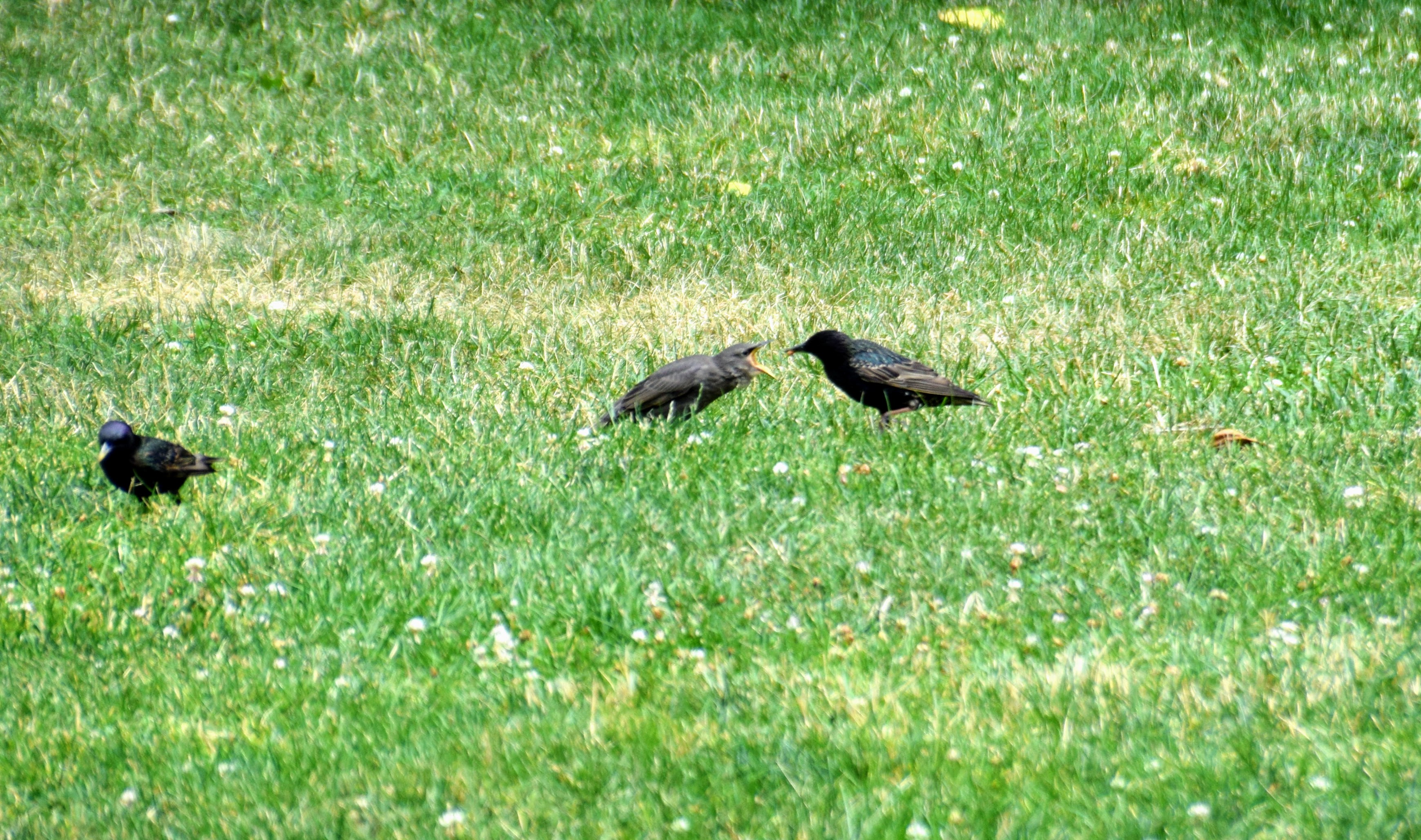
Here, an adult Starling feeds something to its fledgling. I often think it’s weird that young birds are the same size as the adults, but still beg for food from their parents. But then I remember that human 14-year-olds are often taller than their parents, who still make them grilled cheese sandwiches. It’s just part of being an altricial species!
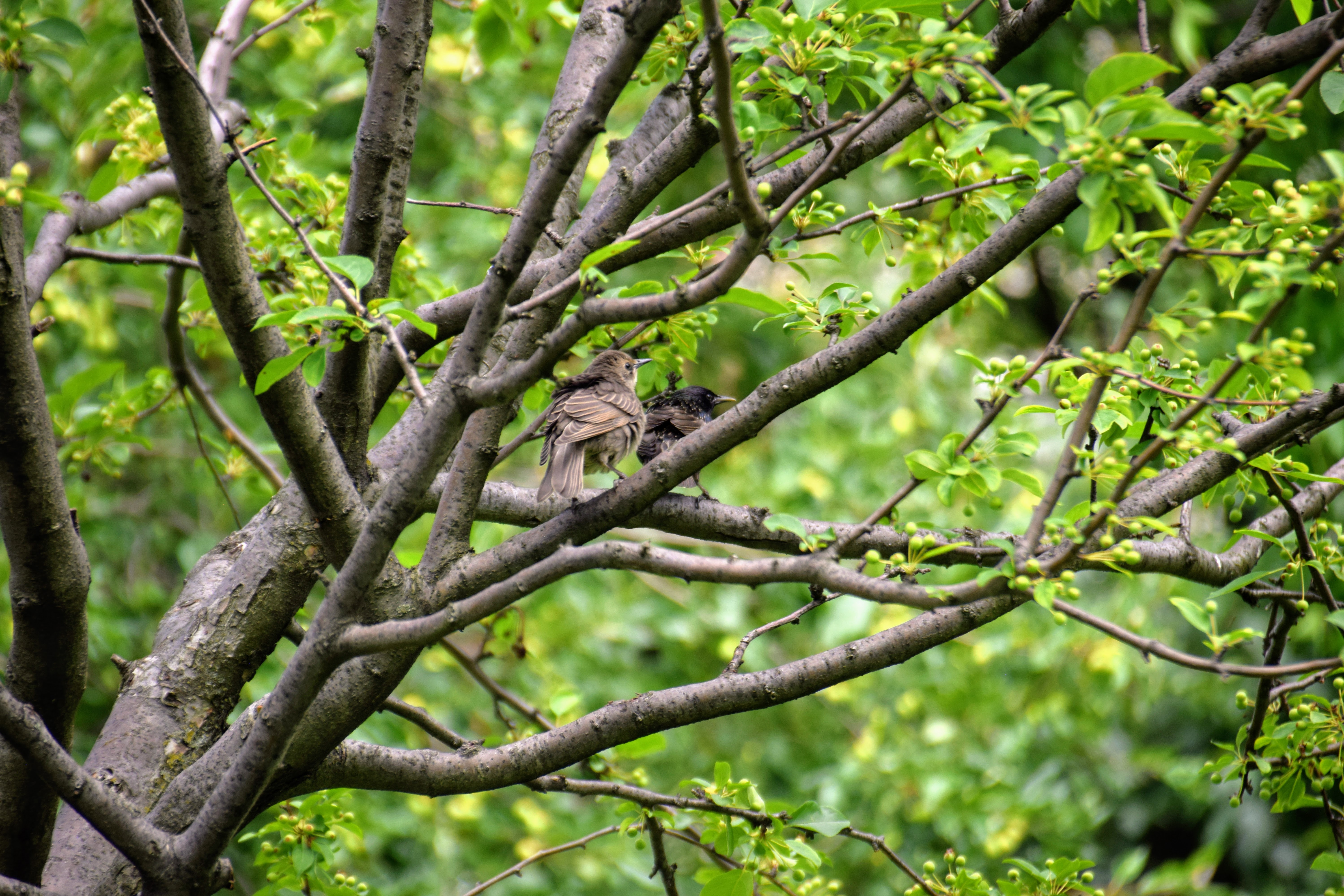
They’ve gone up into a tree. The youngster looks a little disheveled.
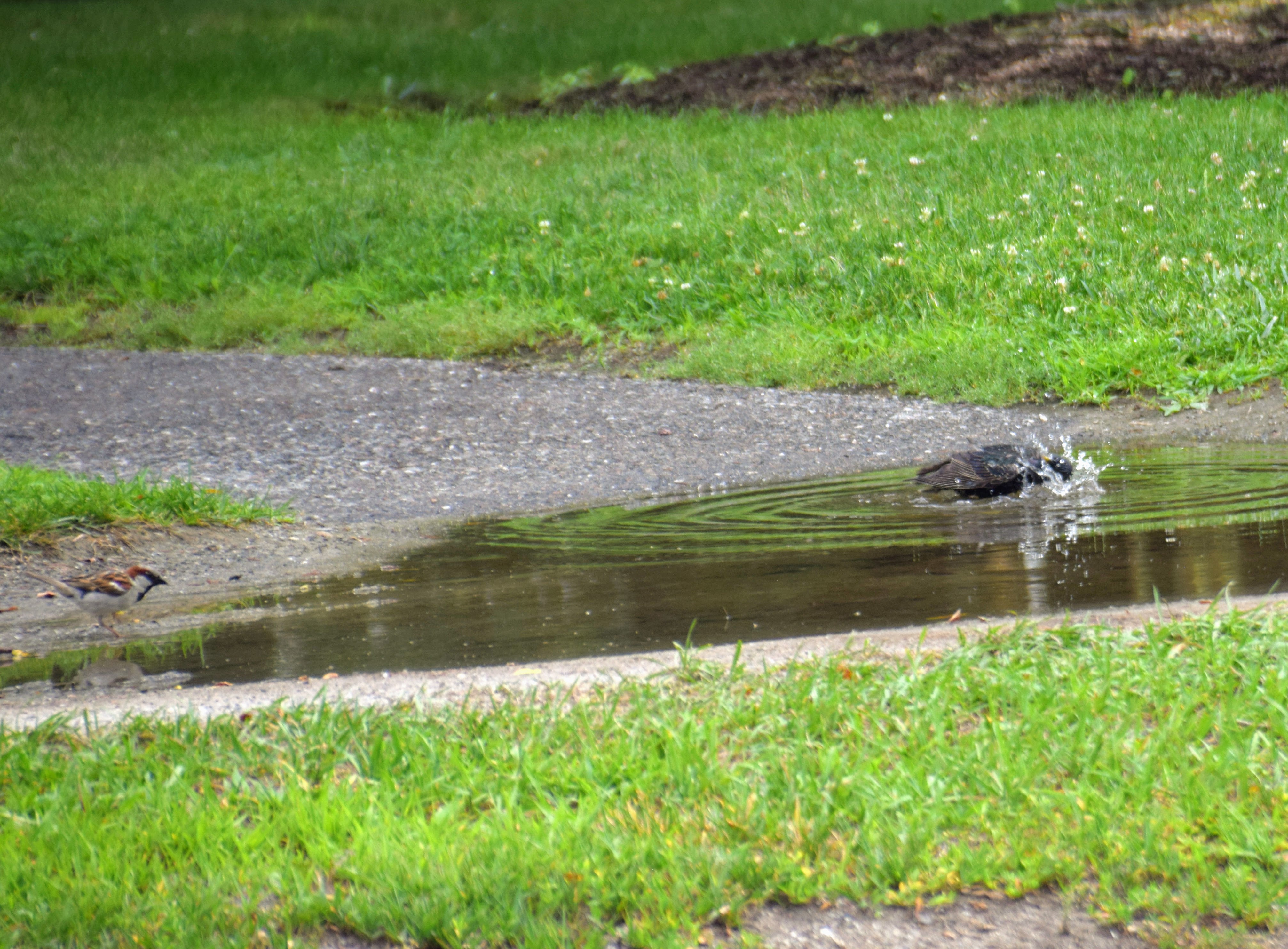
Here, a Starling takes a bath in a puddle, while a male House Finch waits his turn.
Others
The Rock Pigeons in Boston seemed much healthier than other urban pigeons, which are usually mangy-looking and missing toes.
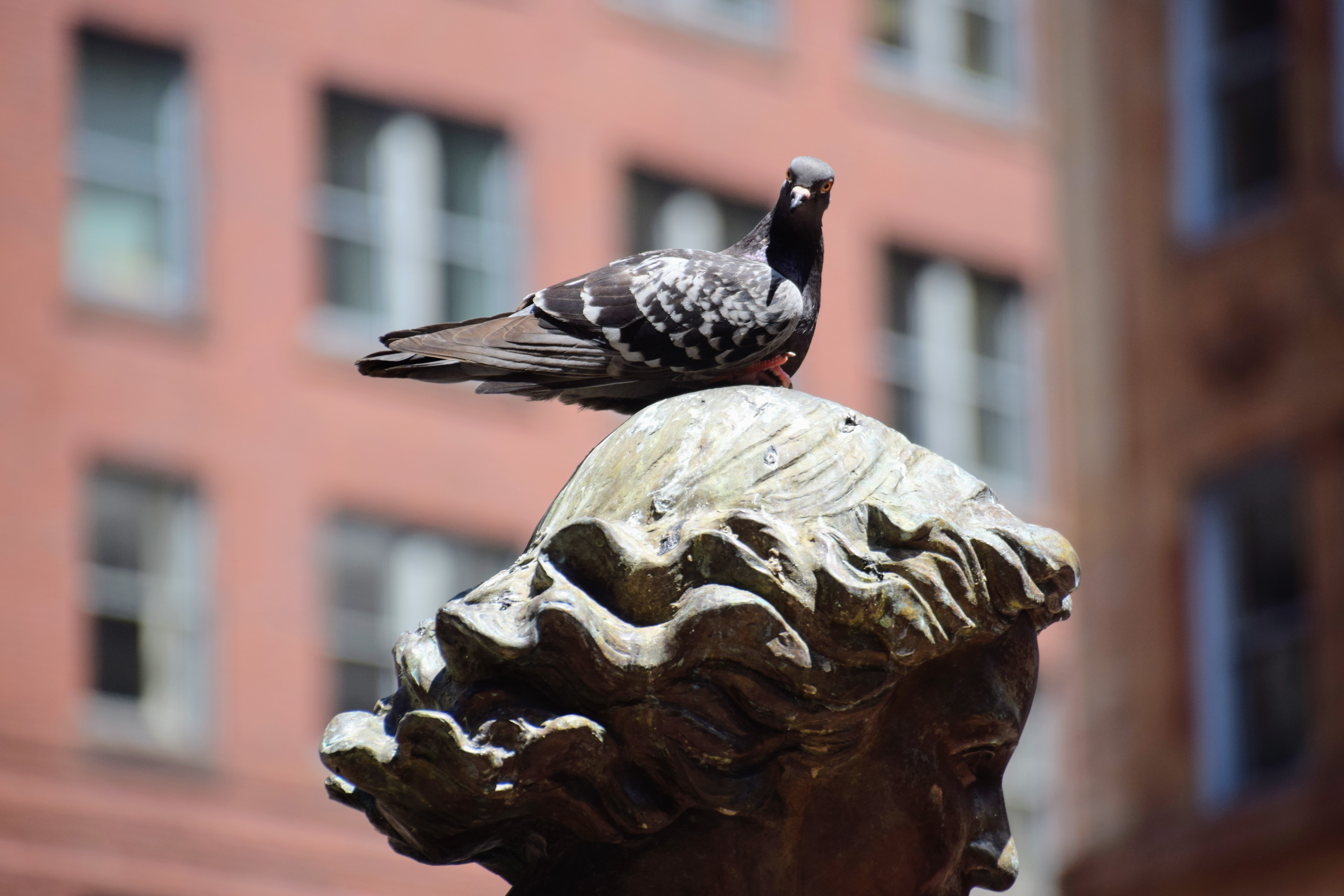
This pigeon was perched on top of the bronze statue commemorating the Irish potato famine. To me, the bird looks as if it knows it’s being disrespectful, and is daring me to do something about it.
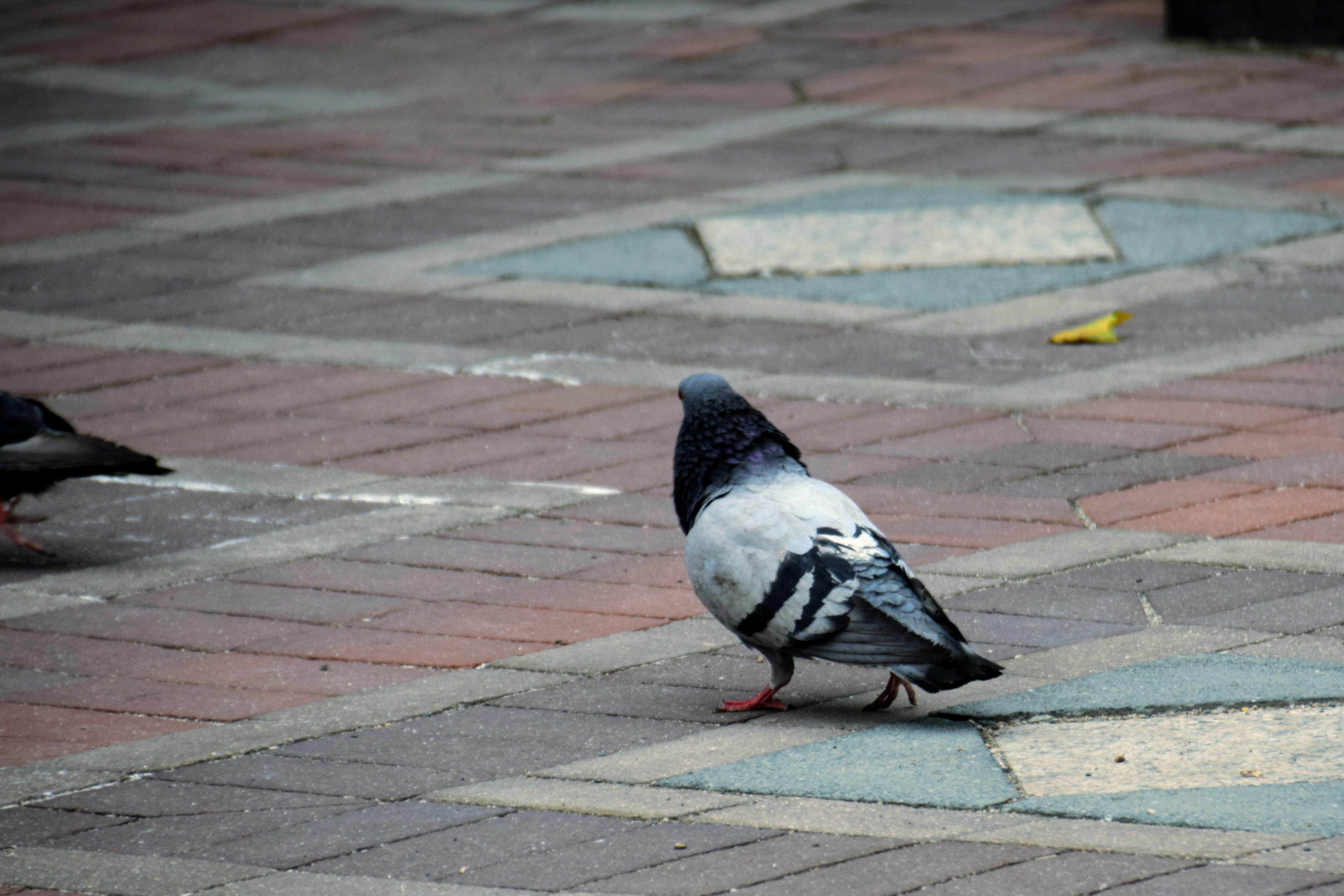
As in San Francisco, the pigeons in Boston were doing courtship dances. The males puff their necks up, turn in circles, and coo at the females, who mostly ignore them and walk away. Here, you can see the female’s tail leaving the frame.
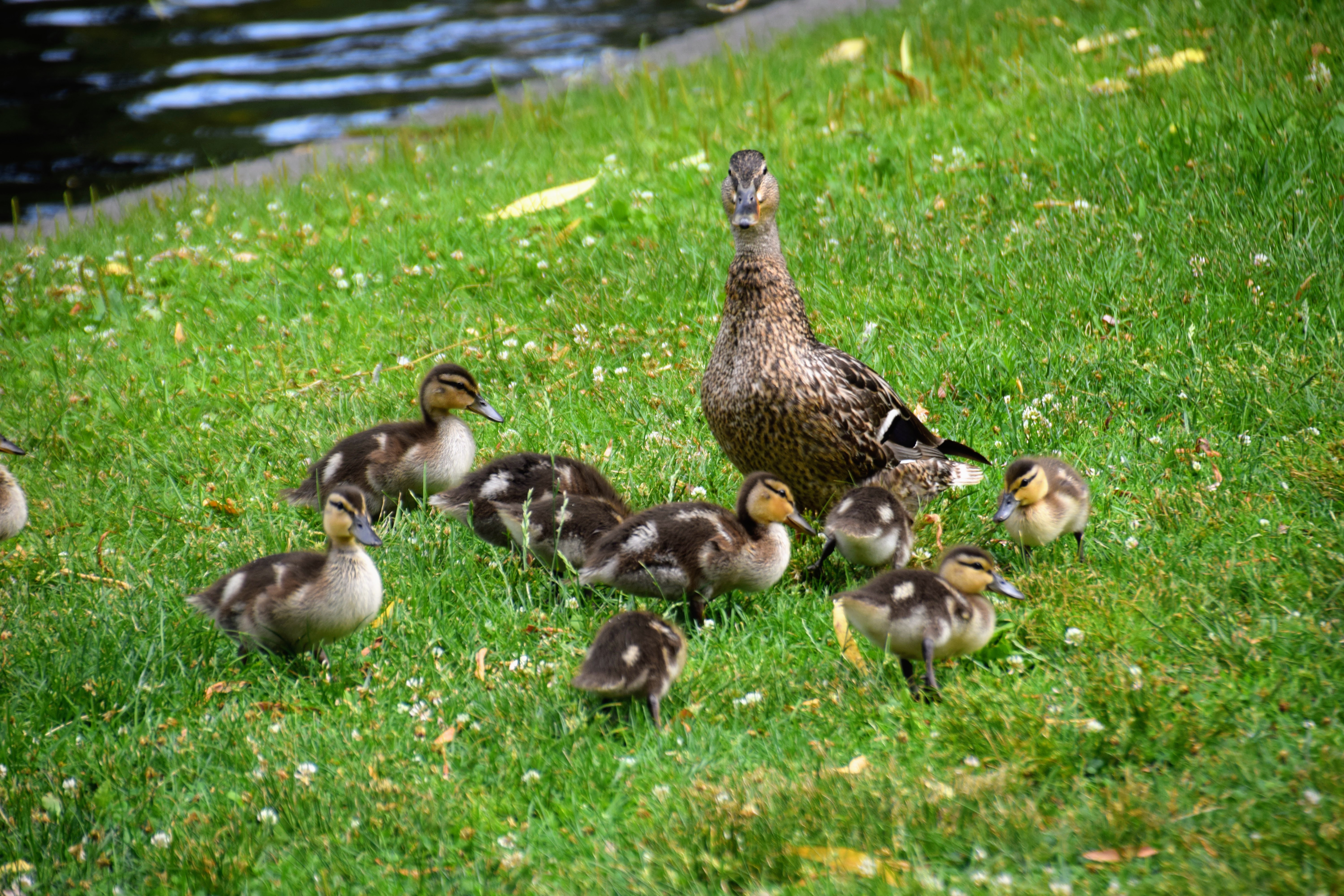
Some of the Mallards had ducklings. They are so handful-shaped! I want to pick one up.
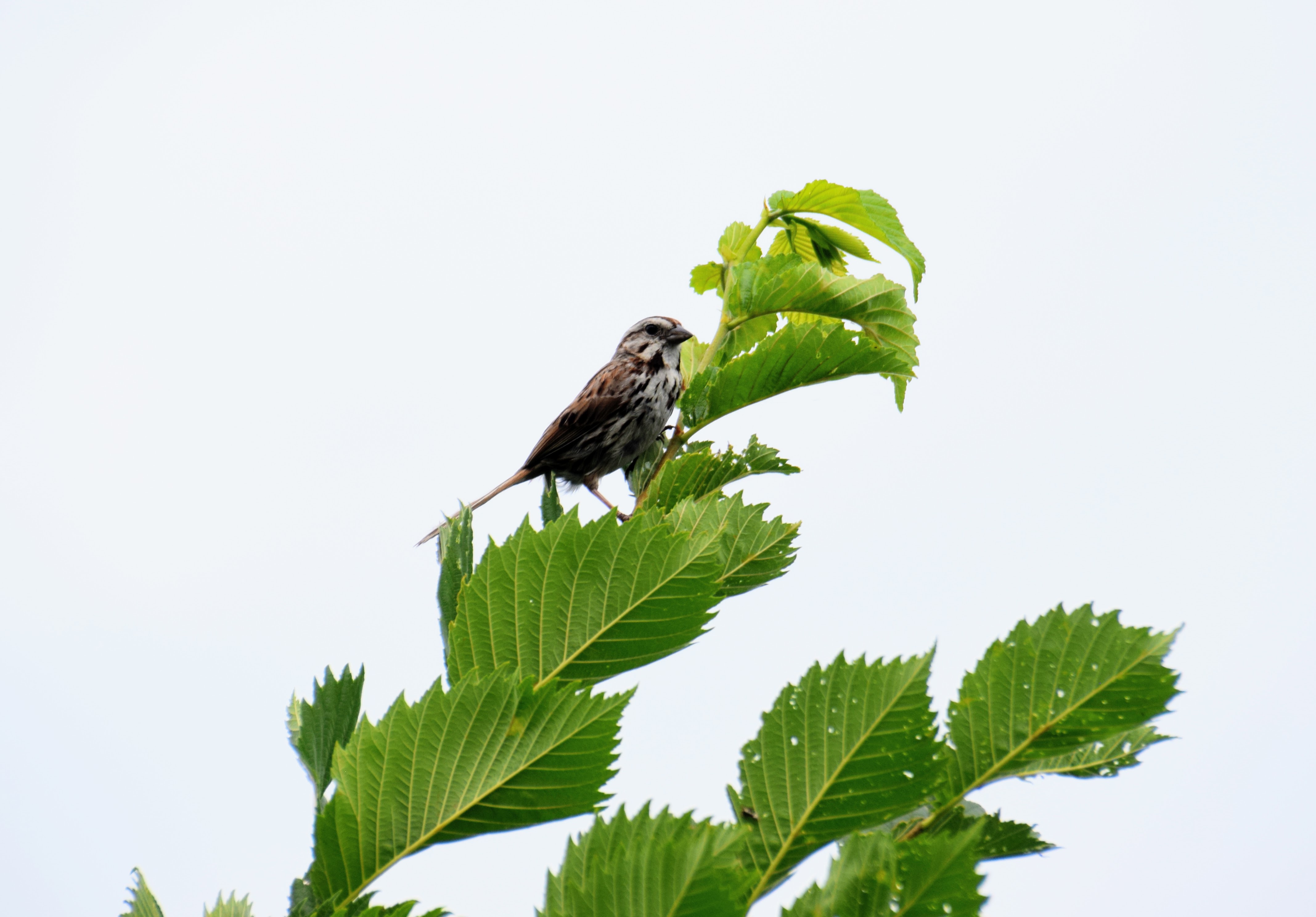
It wasn’t ALL House Sparrows in Boston–only 99% House Sparrows. Here’s a proudly defiant Song Sparrow.
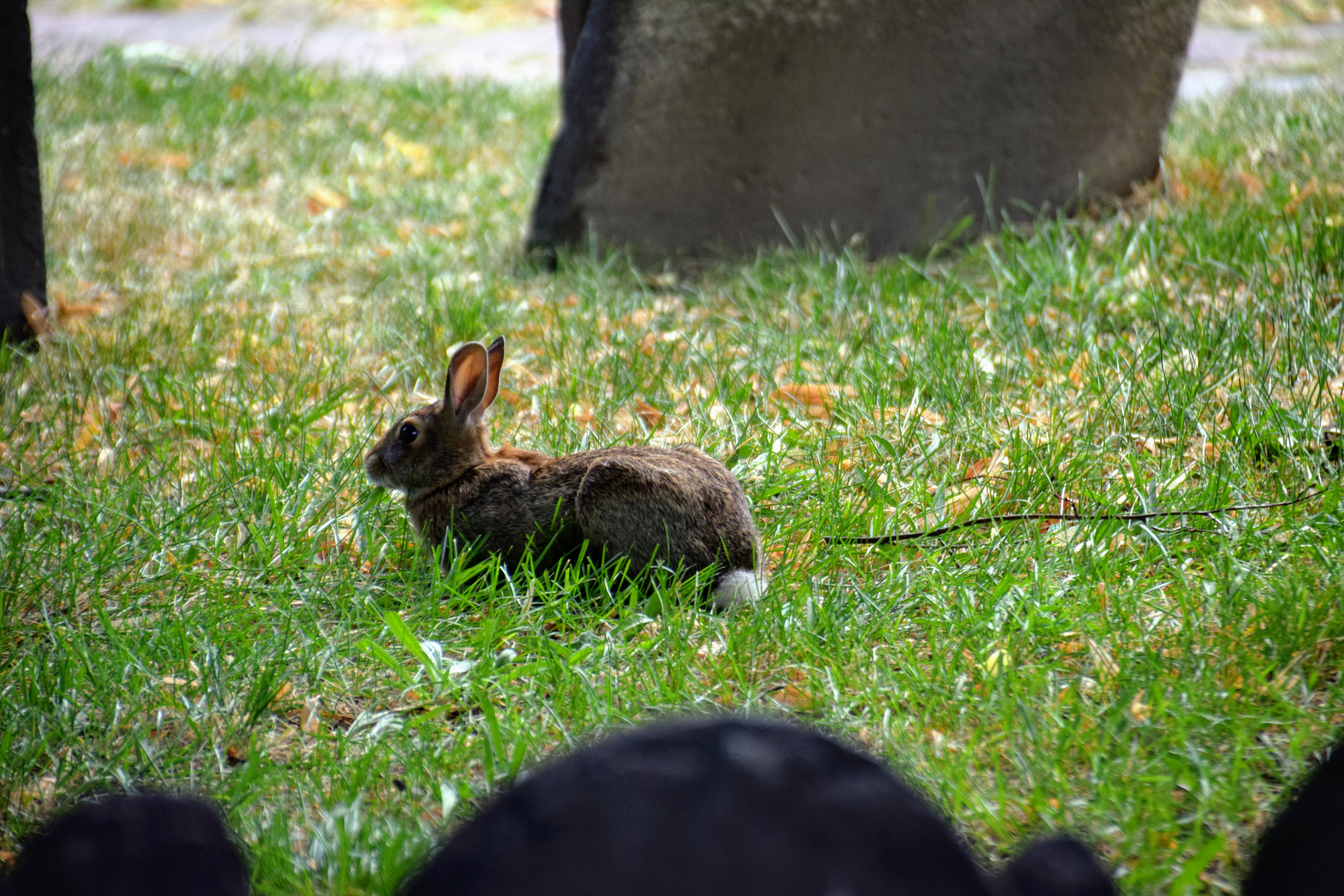
Perhaps this bunny is eating some atoms that were once part of Samuel Adams.

Bonus! Not in Boston, but I visited a plant store that had a couple of resident birds. This is a pearled Cockatiel named Papaya.
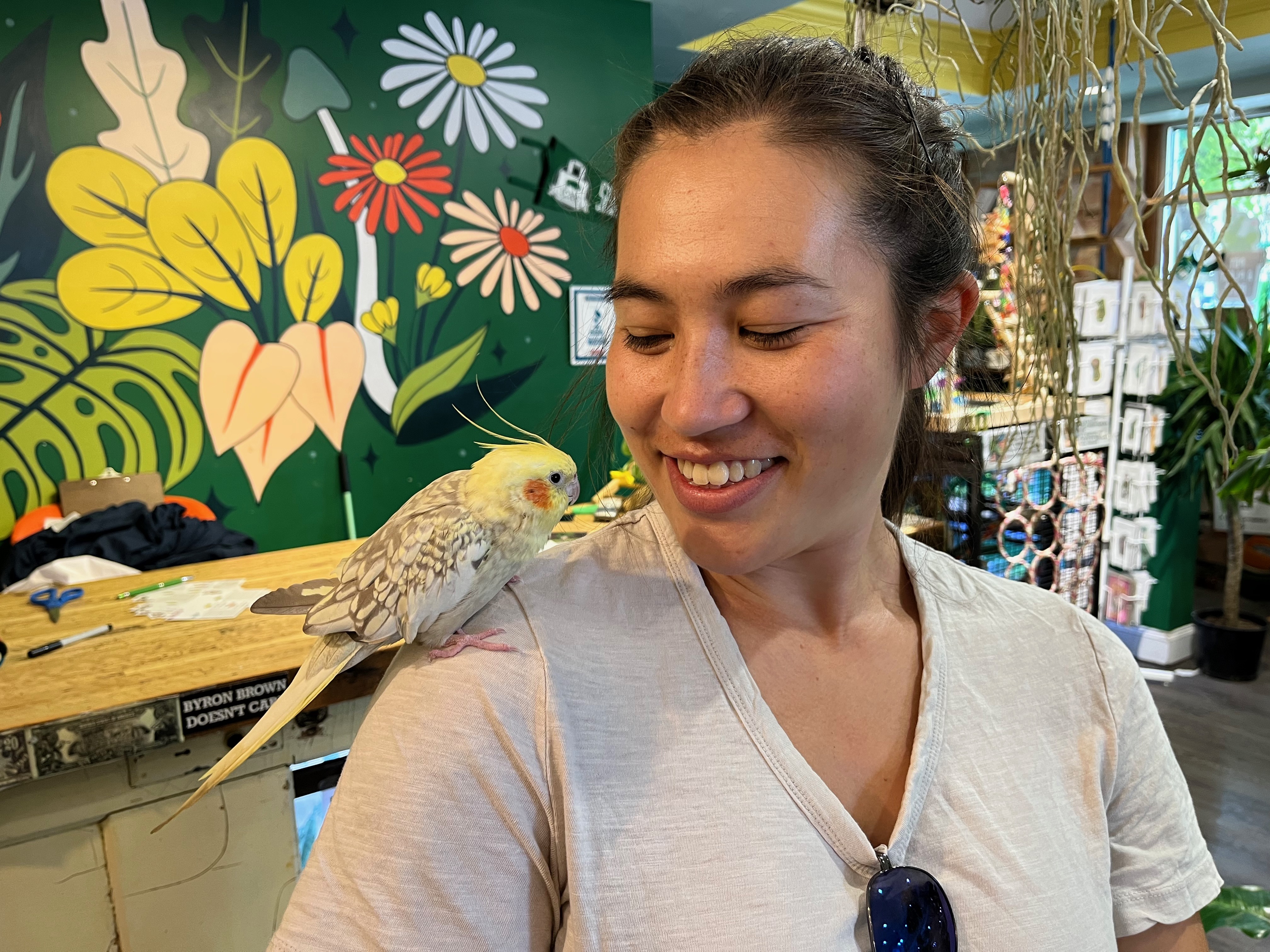
Here’s me with Papaya. She was incredibly friendly and never got tired of neck scratches.
